What’s in a Name?
PHOTO: Milan central train station.
The pleasure of serendipity …
A great advantage of retiring in the southwest of France is the ease of travel to other European locations. While we are just getting to know Spain and Portugal, we have a long-standing relationship with Italy having vacationed there several times. JB has been to Pompeii, about 170 miles south of Rome, but I had never traveled south of the capital city. When he suggested last summer that we plan a trip to the southern regions, including Centrache, Calabria, I readily agreed. This tiny mountain village, on the “arch of the boot,” is where my paternal grandfather was born, but had never made it on to my travel bucket list. Also, the possibility of extending summer well into October appealed to me.
When it comes to travel, I am normally an over-planner whereas JB prefers a more open itinerary. But this time, for various reasons, I wasn’t energized for my usual drilling down on lodging and activities. As a result, the journey was left open to the pleasure of serendipity and luckily dodged the potential misfortune of poor planning. The general idea was to spend two days in Milan followed by a week based in Catania, Sicily from where we could venture out on day trips via regional trains and buses. This would include a side trip to Centrache which has little in the way of accommodations. I booked a room in a small BnB in Pizzo, simply because it was the nearest most populated town, about an hour’s drive west on the coast of the Tyrrhenian Sea. What we would find in Pizzo, and how to get from there to Centrache, was left to chance .
I put a little more effort into booking an Airbnb apartment in our Sicilian base camp of Catania. It was a quirky but well-appointed renovation in a historic building, on a quiet street close to amenities, and only a half mile to seaside cycling lanes for morning runs. It included a private terrace with views of Mount Etna, perfect for enjoying aperitivos while watching the sun set. Our hosts offered great recommendations for restaurants, markets, and historic sites. While sipping morning coffee, we plotted day trips to Siracusa and Taormina. These towns, like Catania, lay on Sicily’s eastern coast overlooking the Ionian Sea, part of the mid Mediterranean.
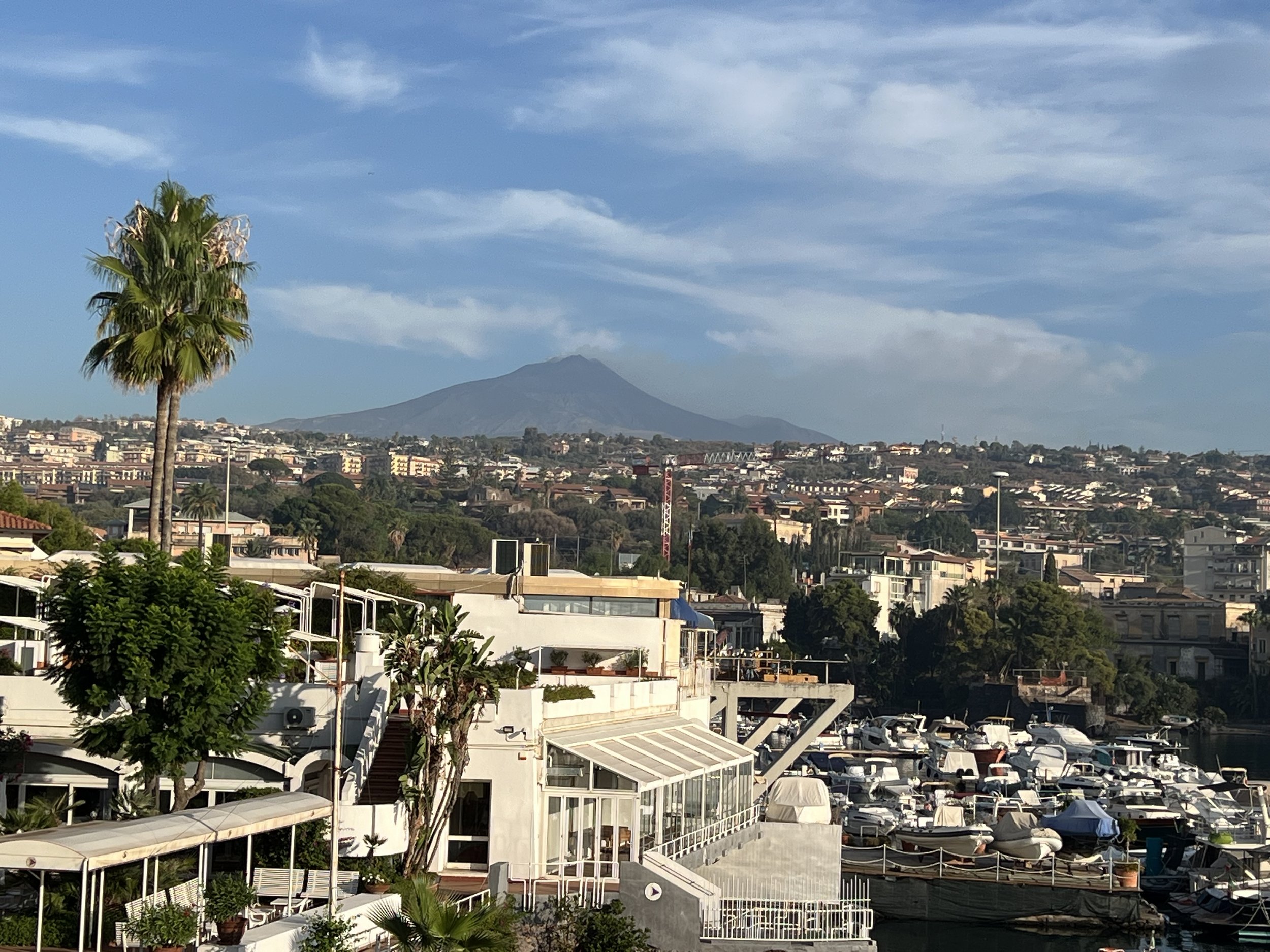
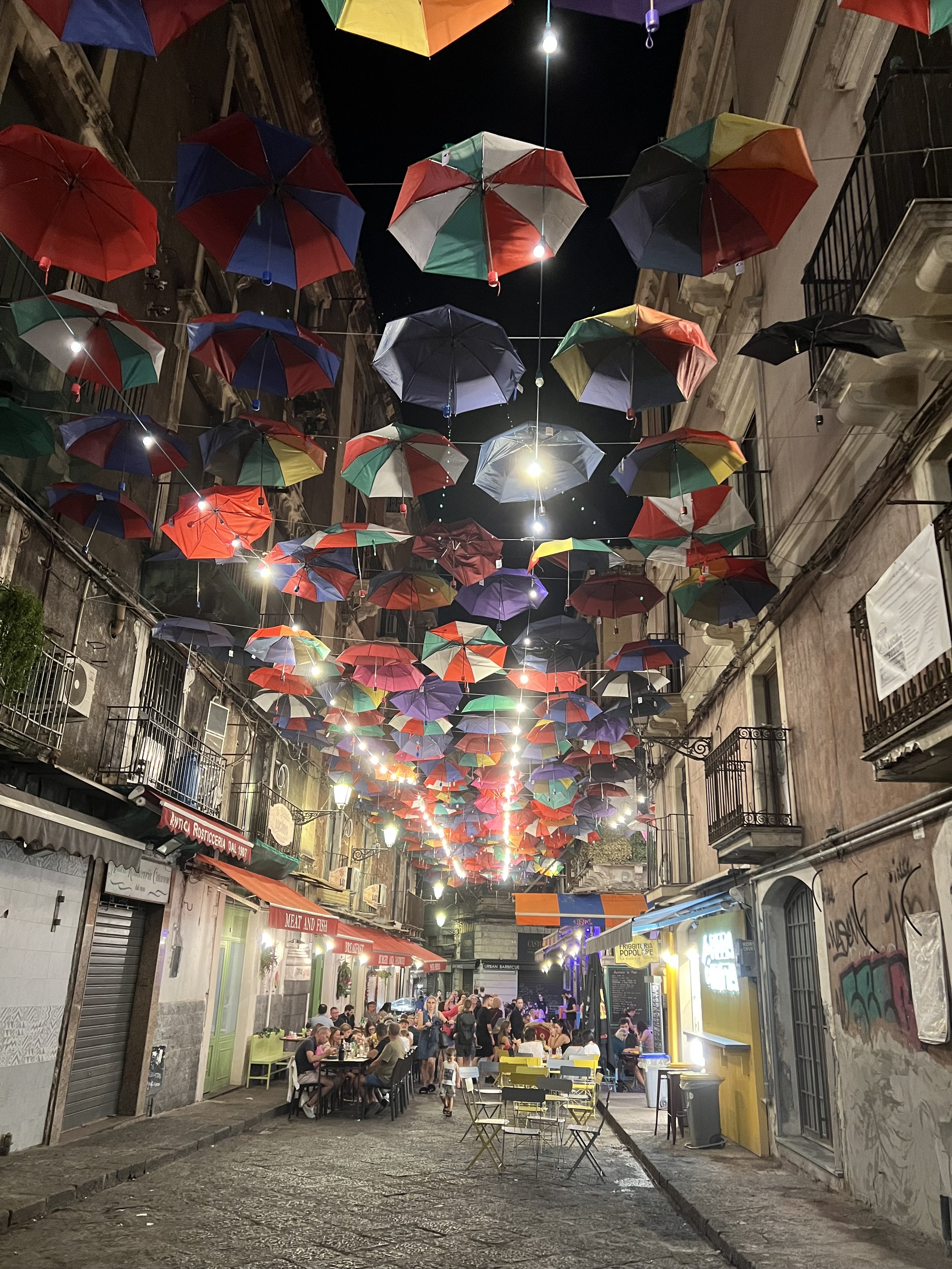
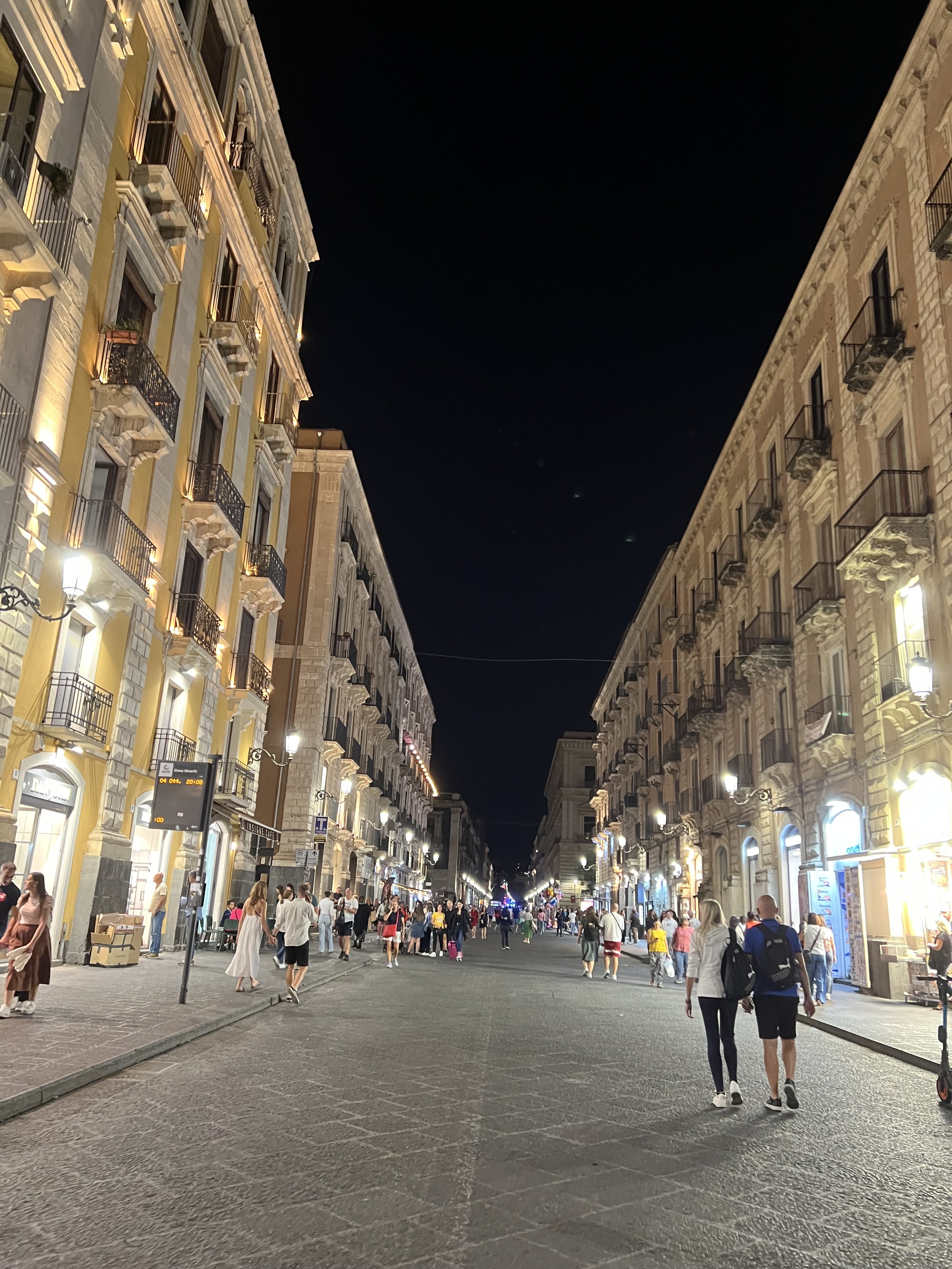
PHOTOS: Mount Etna and the streets of Catania
The thrill of happenstance …
Our most memorable day in Sicily was spent in Siracusa. We planned to visit ancient ruins that included a Roman amphitheater, a Greek theater, and a limestone cave in the shape of a human ear. Taking the local bus allowed both of us to enjoy views of the arid landscape dotted with ancient villages and the deep azure sea churning below along the steep rocky coastline. We arrived just before noon with growling stomachs, so the ruins would have to wait until after lunch. A quick google search on “meals for foodies” unearthed an intriguing option, Aglae Ristorante, with a young female chef at the helm and a string of 5 star reviews. I quickly booked a table, and we set off toward the restaurant tucked between the ancient stones from which the city is built.
Upon arrival, we were warmly welcomed by name in English. I immediately had a sense that we were about to experience one of life’s truly happy accidents. A haphazard mix of funky artwork covered the walls and a collection of white ceramics, splashed with sprays of color “à la Jackson Pollack,” sat on table tops and behind glass enclosed cabinets. The unique ambiance proved to be a fitting reflection of the three sisters running the restaurant and a family story as extraordinary as the exceptionally crafted food.
Chef Gabriella Antonuccio graduated from the prestigious ALMA international school of Italian cuisine. Beyond her professional training, a trip to Japan with a mentoring chef deeply influenced her culinary art. Gabriella’s modern transfiguration of traditional Sicilian ingredients reveals a delicate infusion of Japanese flavors and sensibility. We wisely chose to let her concoct three surprise courses. While we relished the exquisite results, we heard the remarkable story of a family’s unified purpose and its bitter-sweet connection to the restaurant’s name.
The power of shared purpose…
In 2001, the Antonuccio family lost twenty-four-year-old Maria Grazia to a rare illness. Her three remaining sisters stunningly transmuted their grief into triumph. When Gabriella committed to the dream of opening a restaurant, sisters Adriana and Alessandra left their respective careers as a teacher and an accountant to work in the restaurant. Adriana skillfully manages the restaurant with warmth, enthusiasm, and an intimate knowledge of the food. Sommelier Alessandra ensures her sister’s creations are paired with equally worthy wines. The women are surrounded by their father’s love and artistry manifested in his paintings hanging on the walls and his hand-made ceramics gracing the tables. Olive oil produced from the family’s own grove is used in the kitchen and served with fresh baked bread at the table.
The restaurant’s name, “Aglae,” is the name of the family’s villa on the southern coast of Sicily, where the girls were lovingly raised by schoolteacher parents. It is also a loose acronym of the four sisters’ names (Adriana’s middle name is Egle). Thus, their identities, a shared dream, and sense of home are deeply intertwined in a single name. After promising to keep in touch with Adriana, we reluctantly parted and spent a few hours wandering the ruins. However, meeting these exceptional women and savoring the sublime cuisine at Aglae will stay with me longer than the ancient archeology.
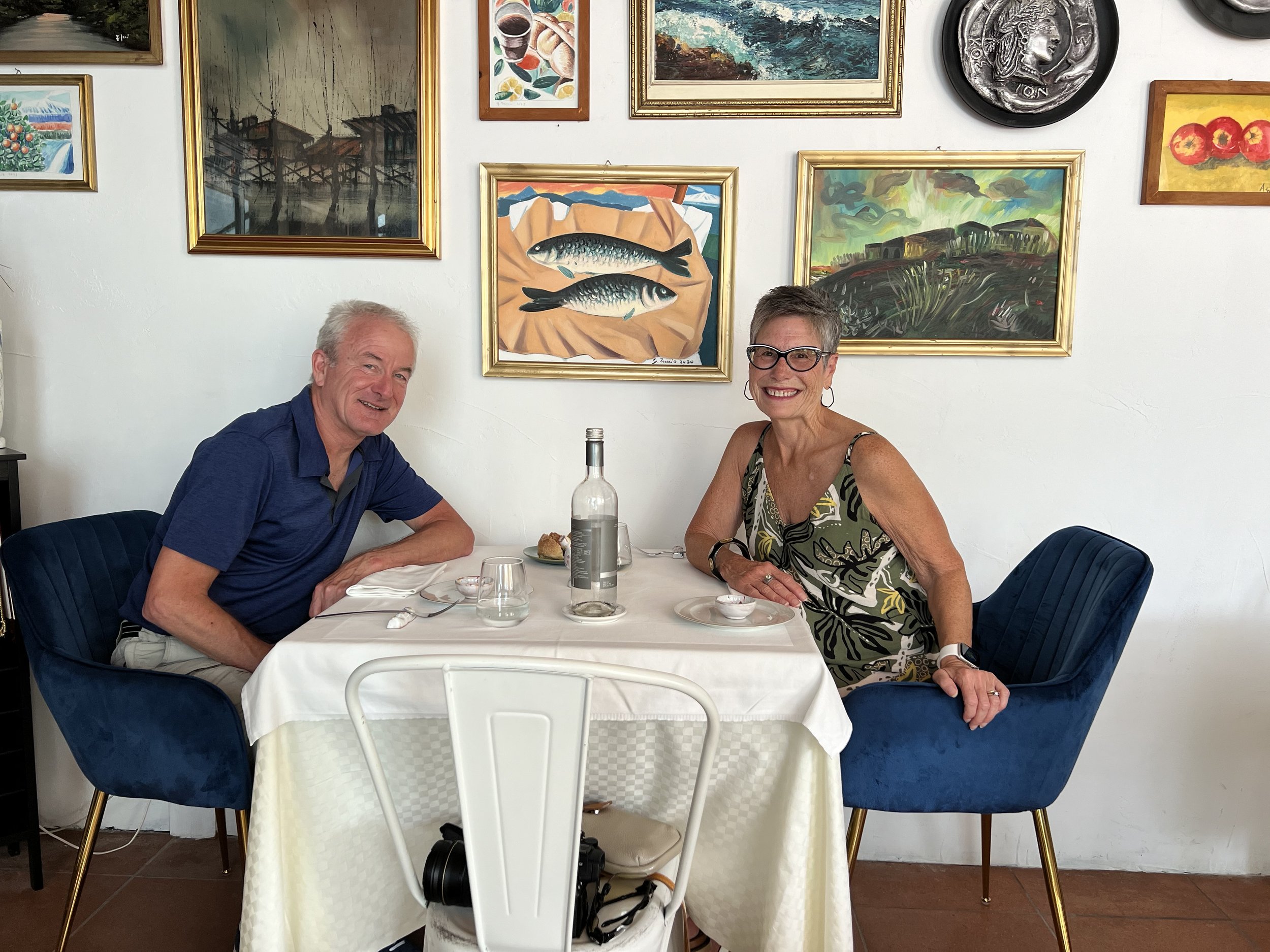


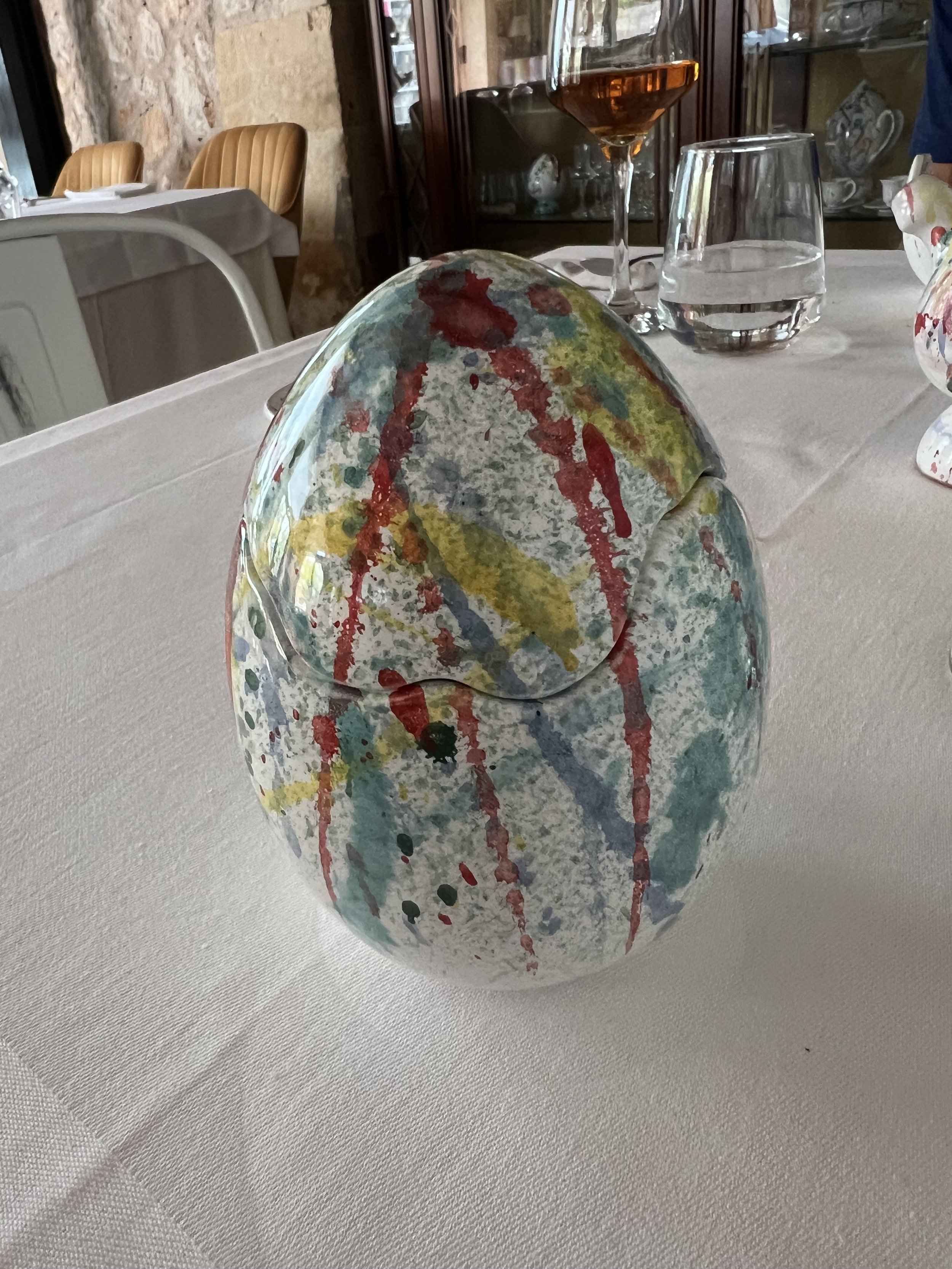
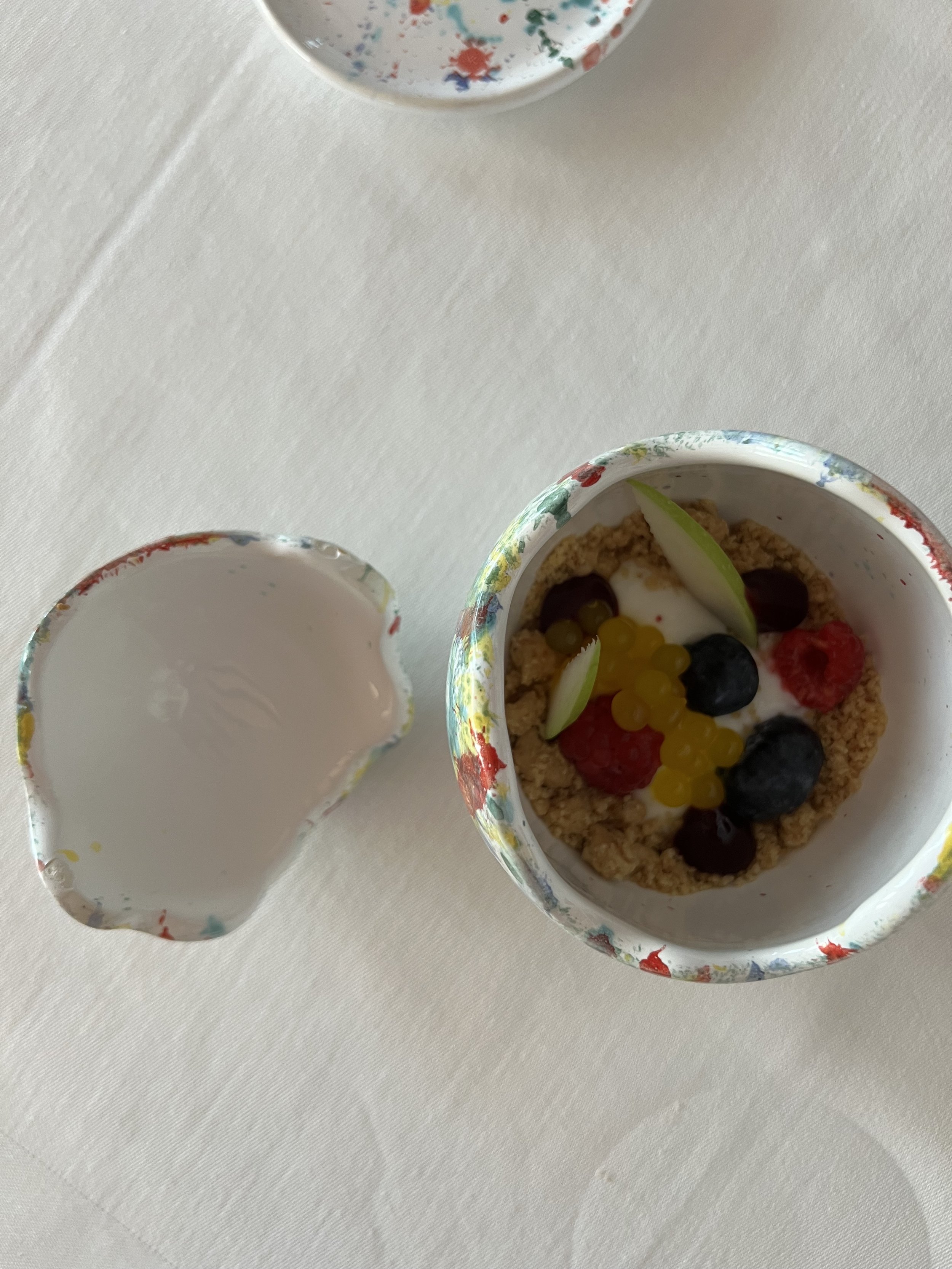
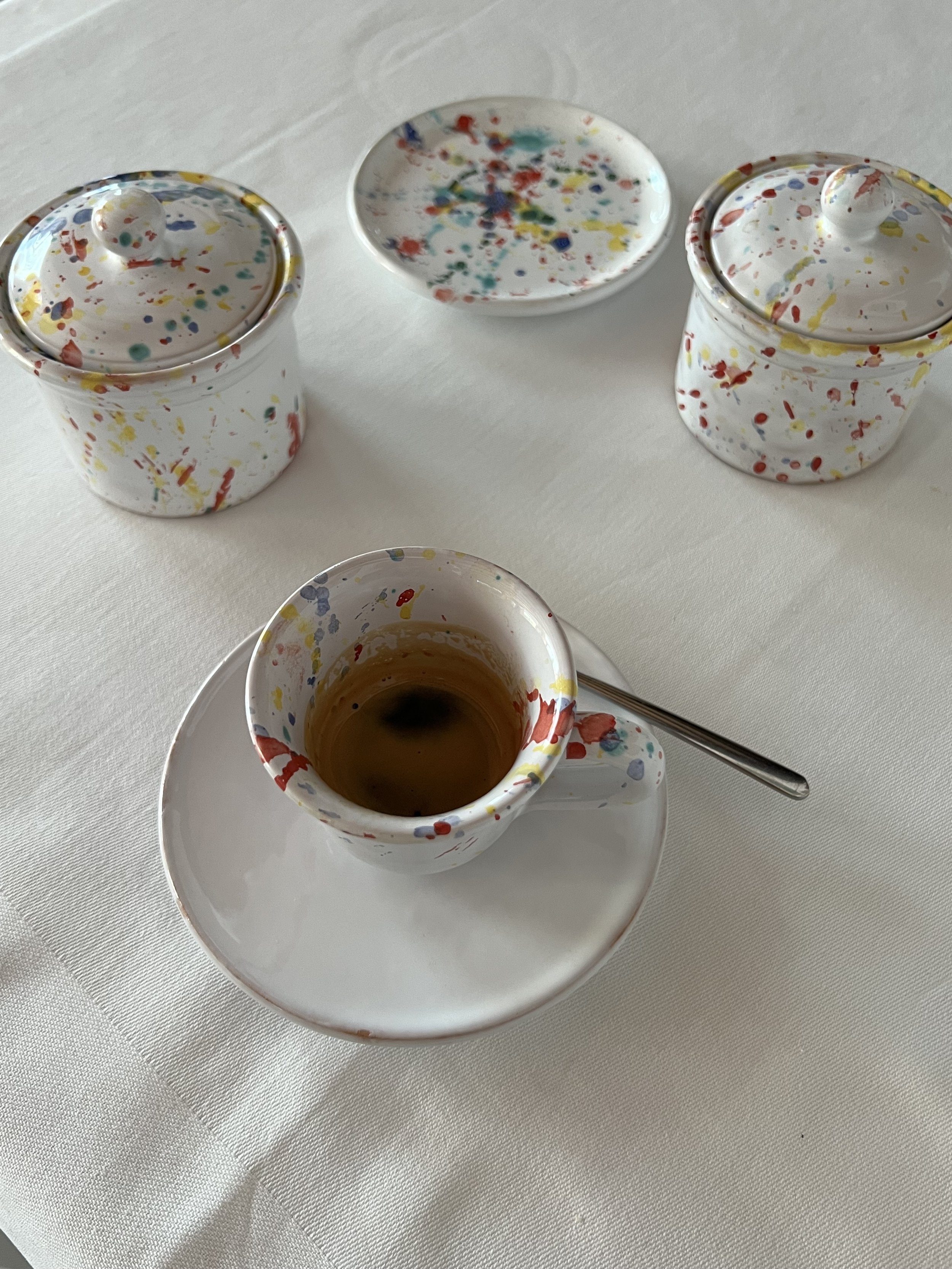
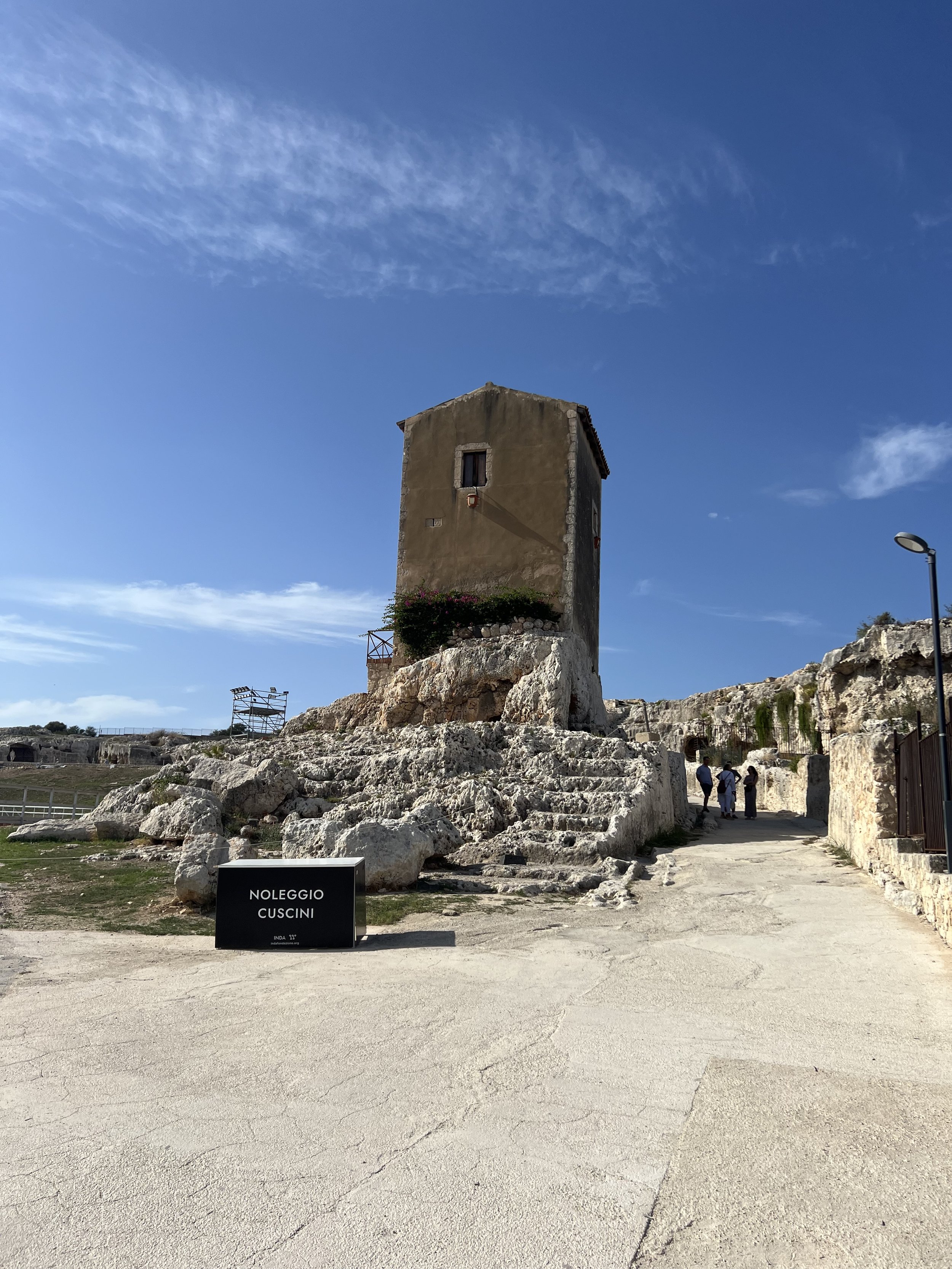
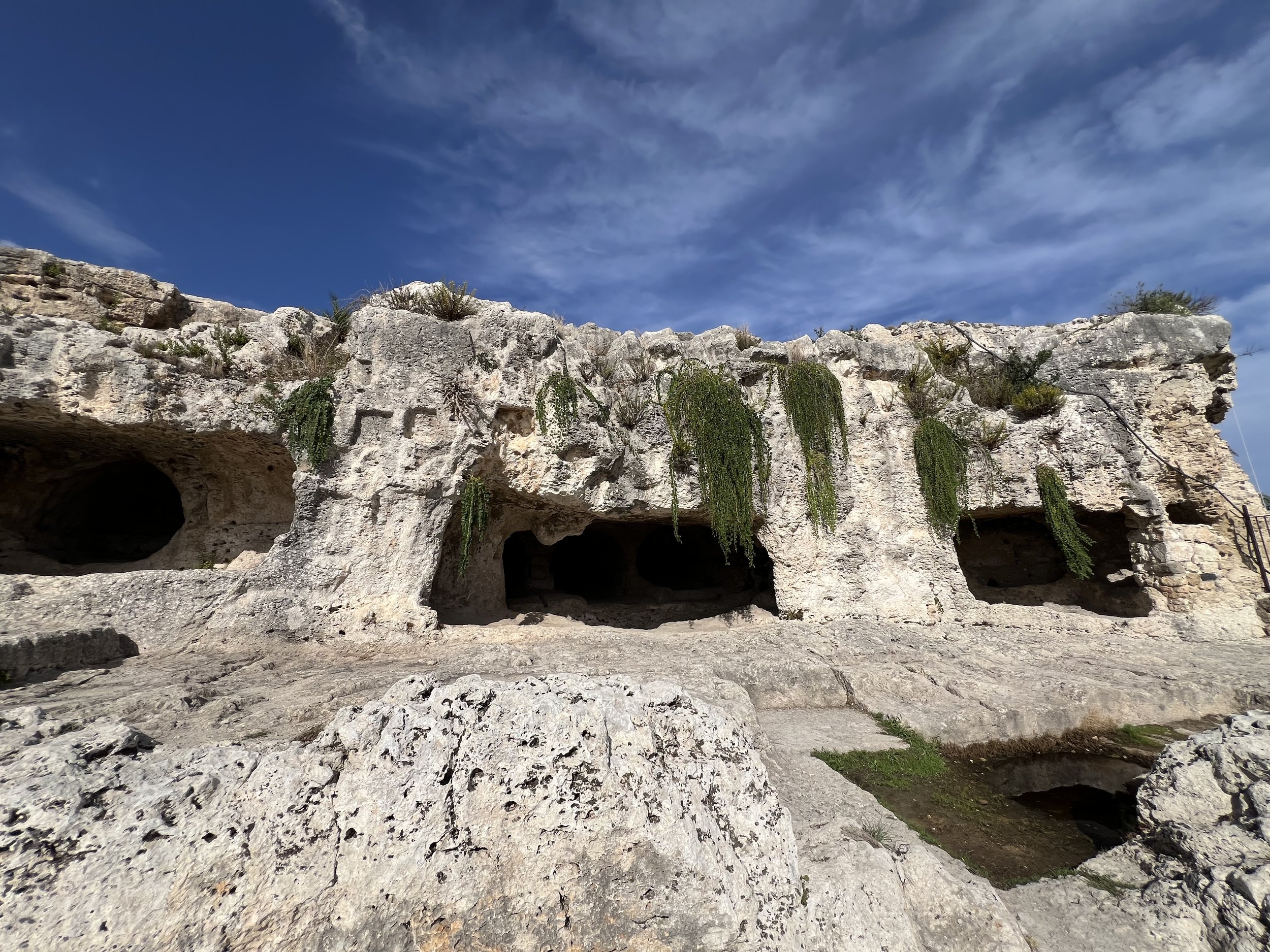
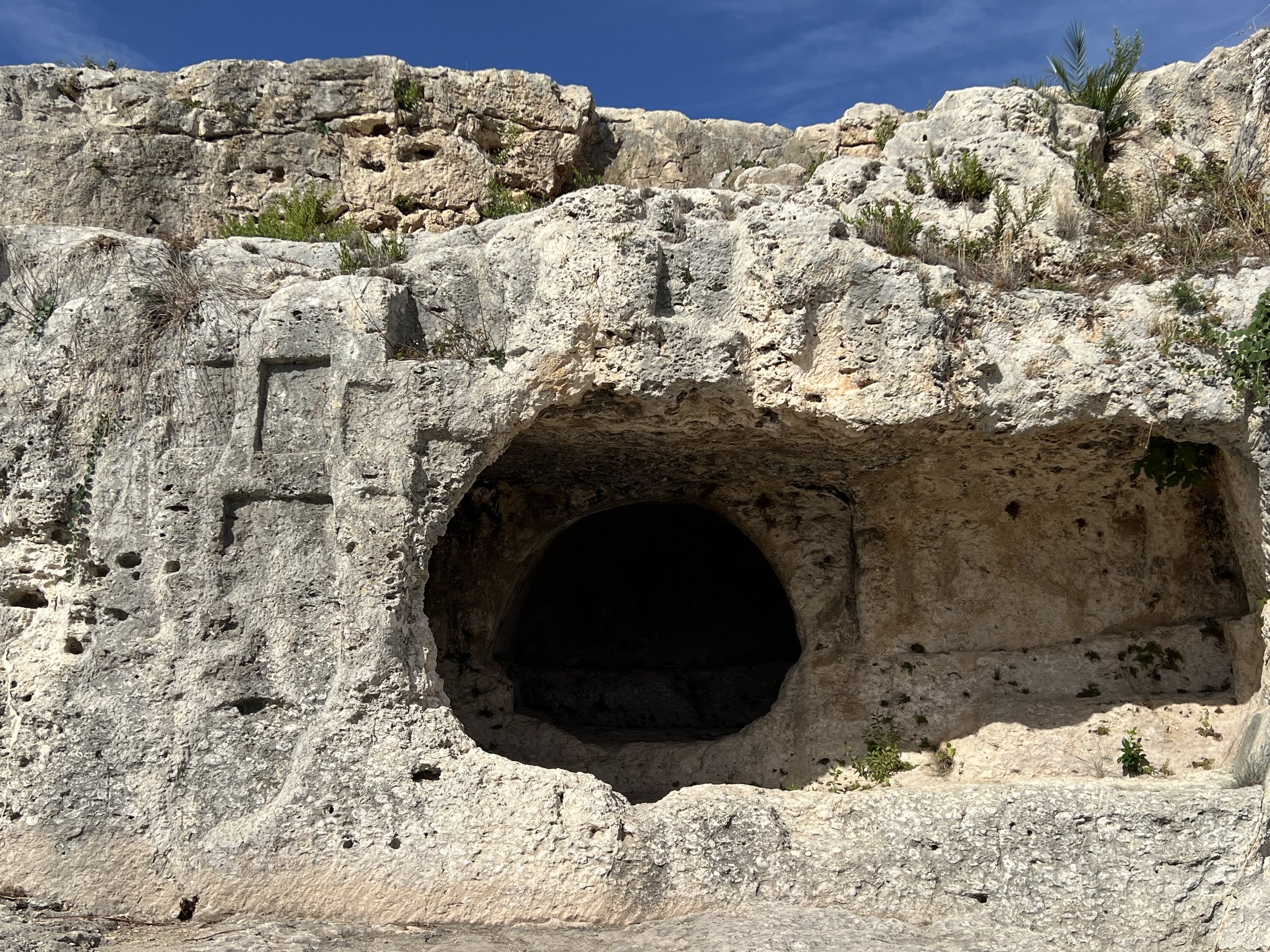
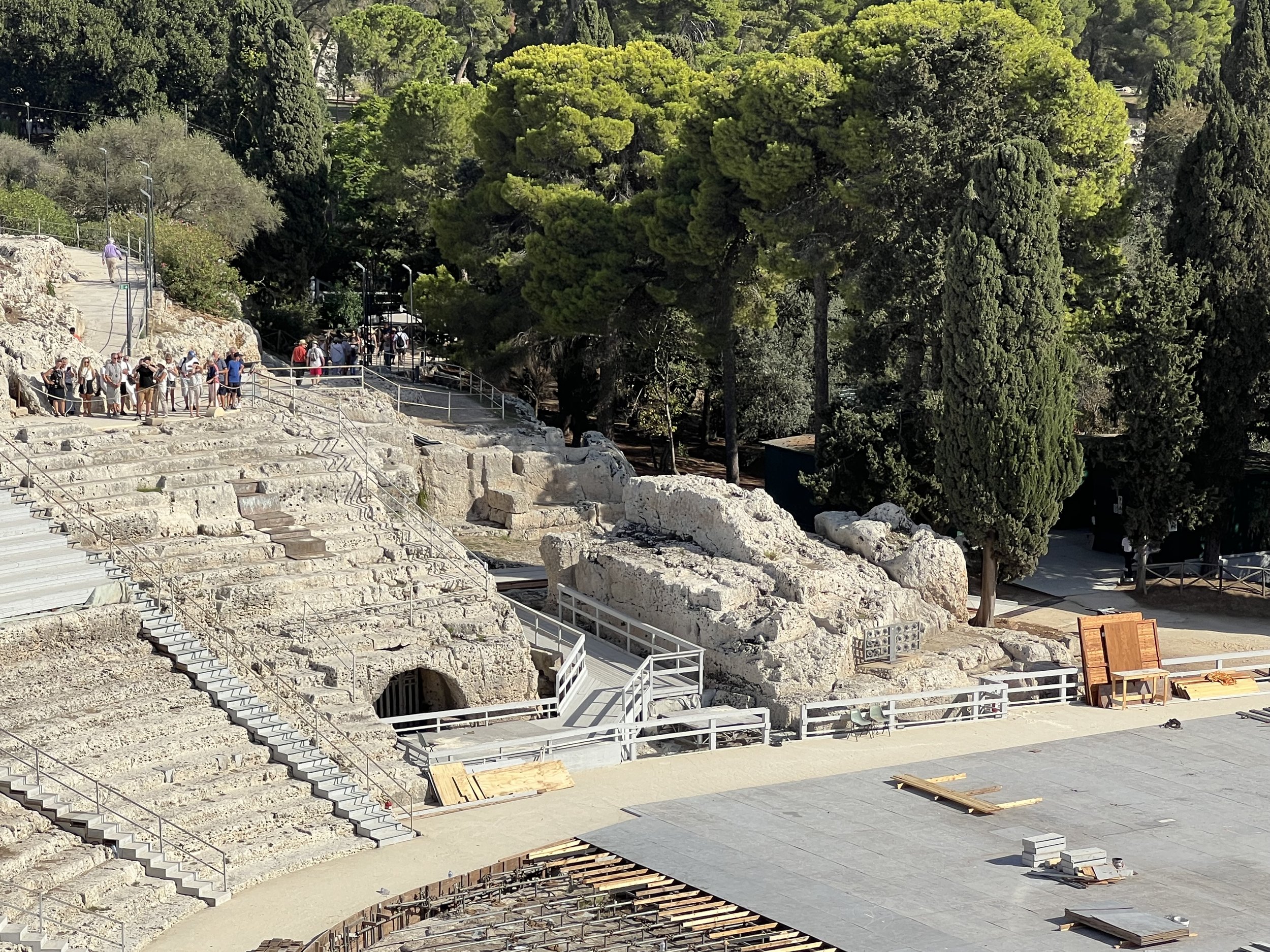
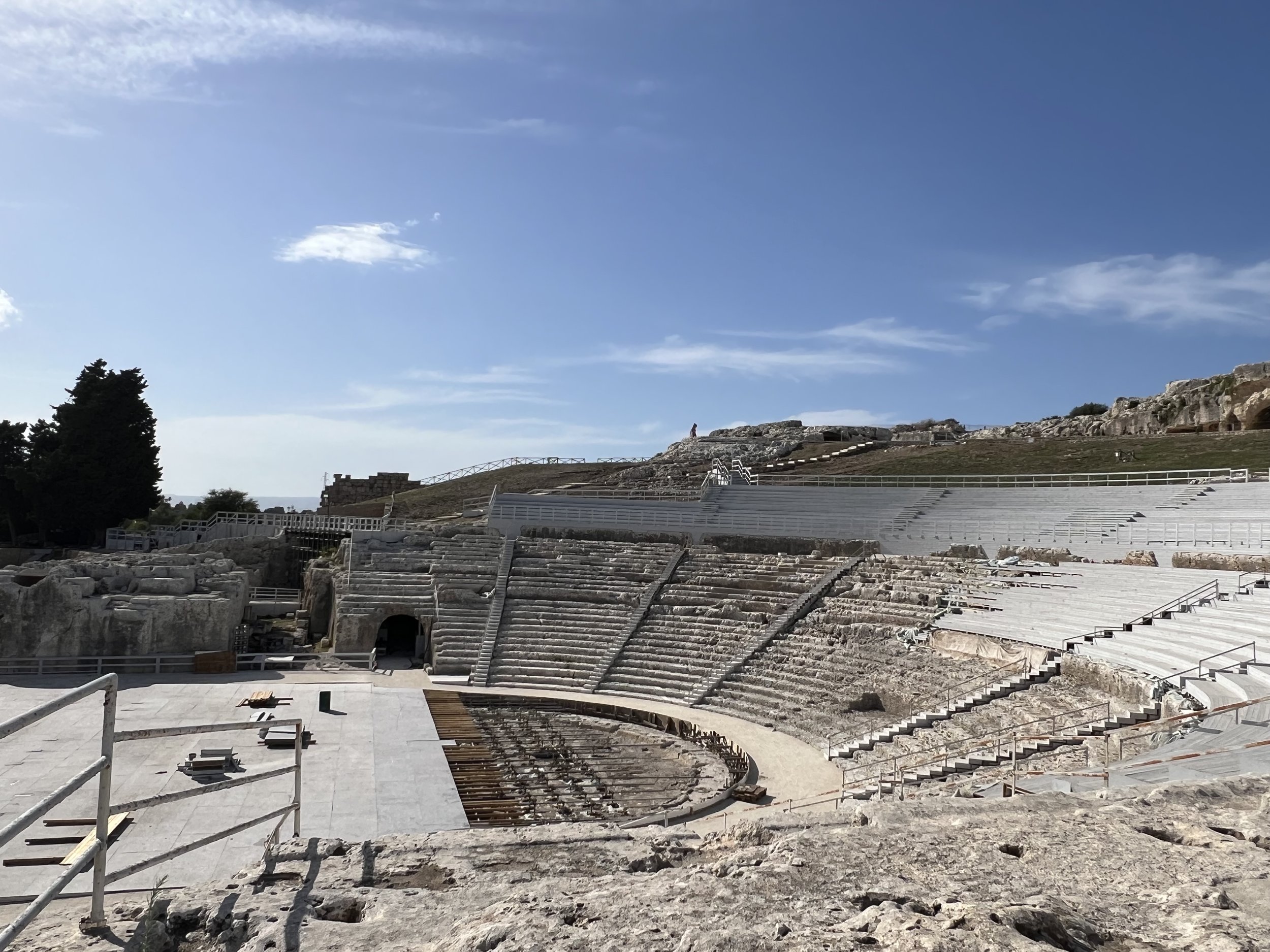
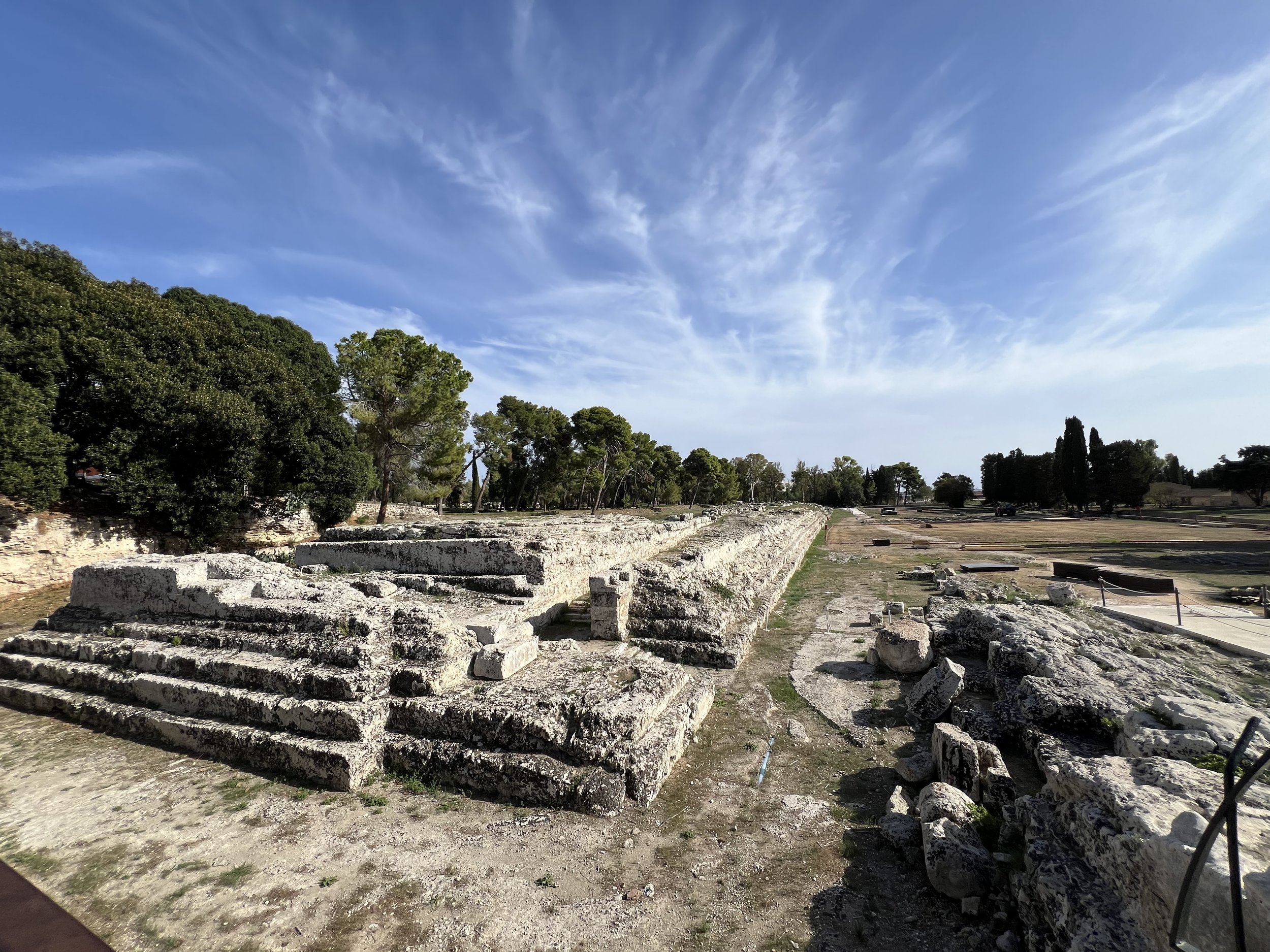
PHOTOS: Aglae Restaurant and the ancient ruins.
Some family magic …
The next day, as we departed for Calabria, I was not anticipating some family magic of my own. I have never put a high priority on exploring my family roots in Italy and the little bit I knew about my grand-father’s birthplace, was derived from my sister’s search on Ancestry.com. Despite living for two years as a child in my grandparents’ home in an Italian immigrant neighborhood, I have tended to identify more with my mother’s Scottish roots. My personality, physical appearance, and predilections were always more aligned with hers than my flamboyant Italian father, even though I adored most everything about him. As I gradually became more connected to all things Anglo-Saxon, so did my academic interests and travel priorities.
As we headed north by train, I was feeling a sense of familial duty and curiosity. I was not expecting to make a deep emotional connection. But almost immediately, the journey began to promise more, even the mode of transport itself. Because there is no bridge connecting Sicily to Italy, crossing from the island to the mainland can only be done by airplane or by ferry. But the itinerary provided by the rail line was vague about what would happen at the point of crossing. Much to our surprise, the train pulled right on to a large ferry equipped with railway tracks in its hull.
Once on board, we dismounted the train and spent the crossing on the deck above. Out in the glorious sun and wind, we watched the jewel toned sea split at the bow and swirl along the hull while the locomotive-laden ship sped toward the rocky Calabrian shore. After docking in Villa San Giovana, our train rolled off the ferry and into a mainland station where we changed to a local line destined for Pizzo, a beguiling fishing village honed from a steep cliff overlooking the Gulf of Saint Euphemia.
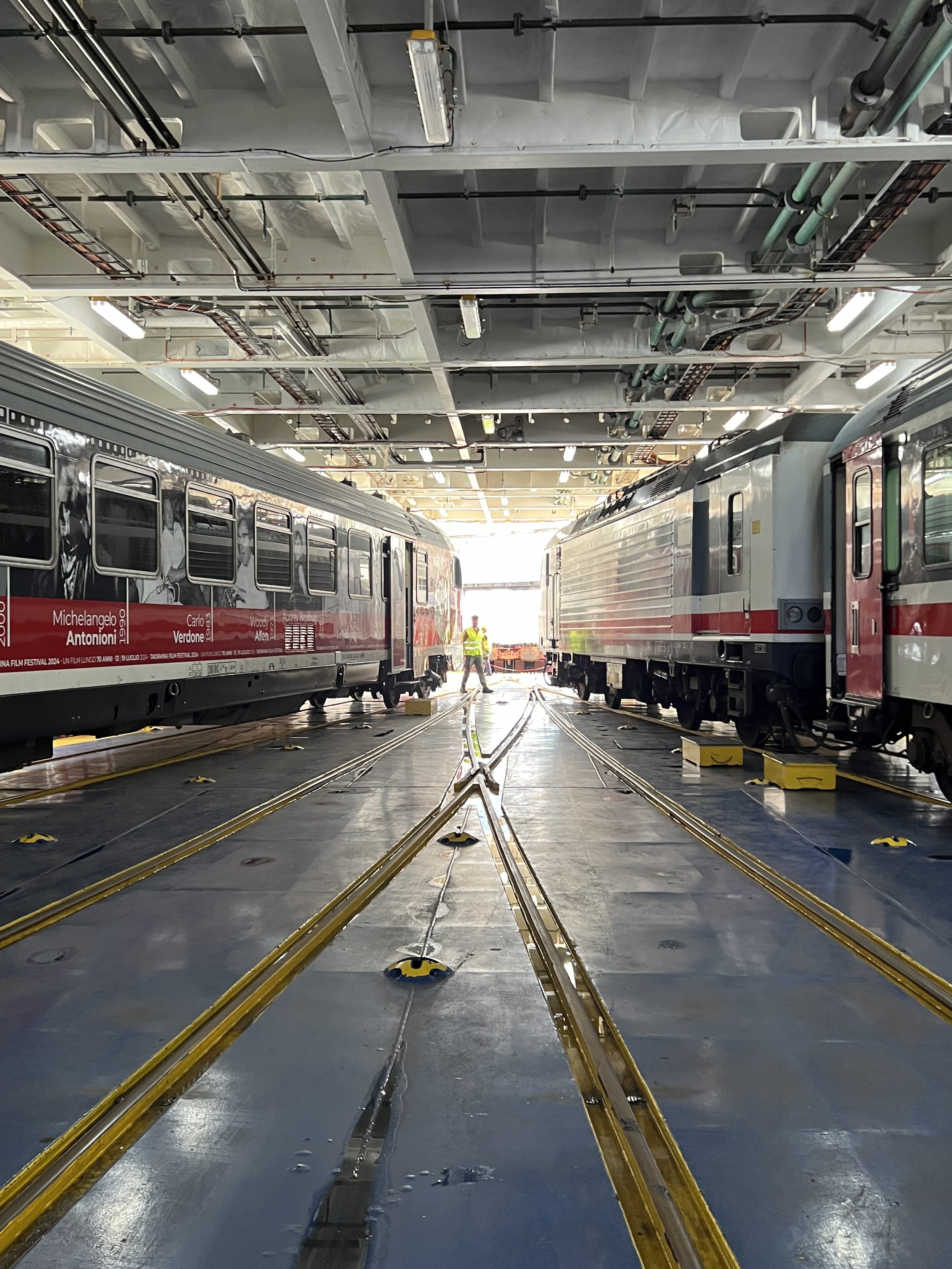
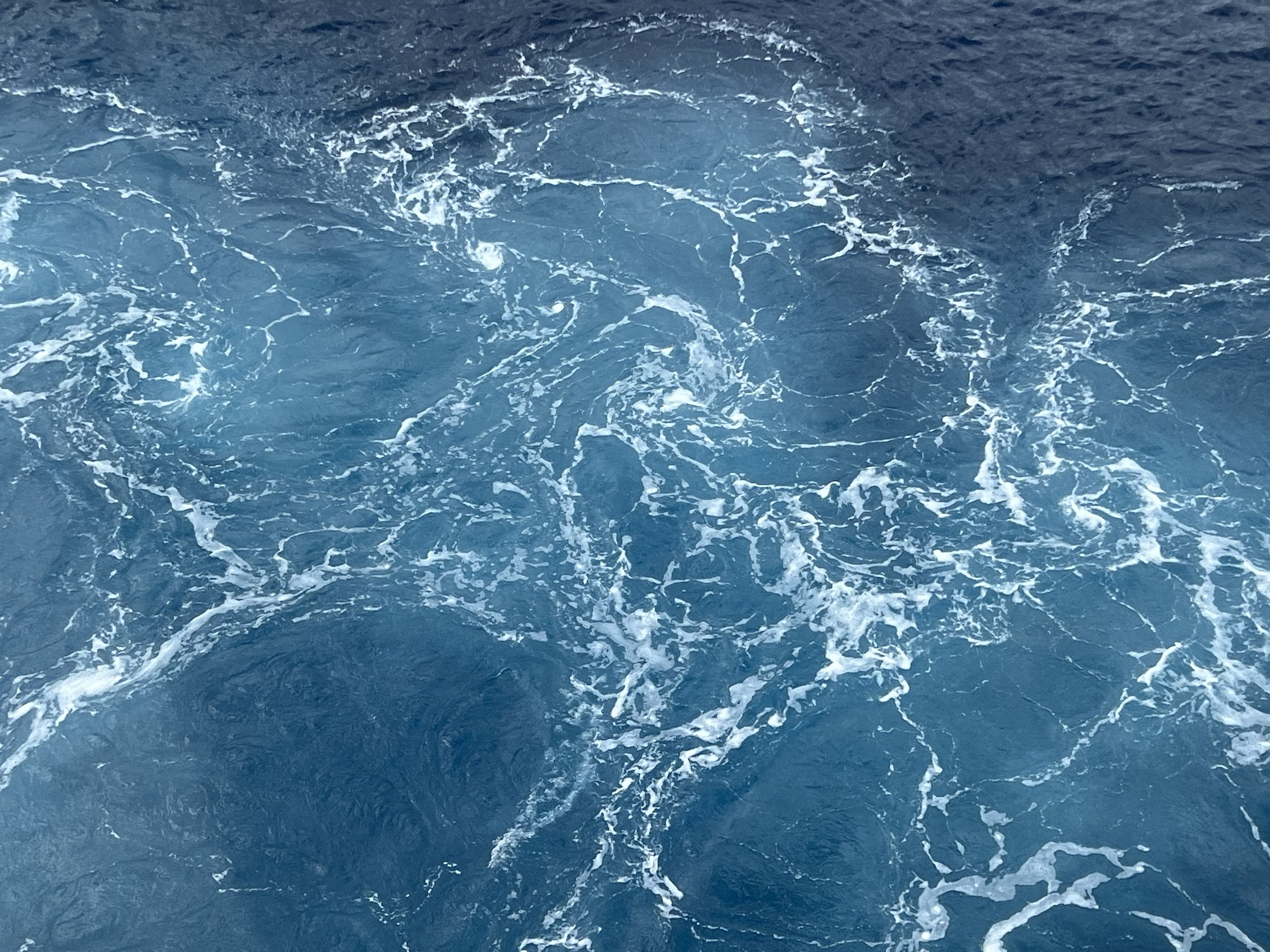
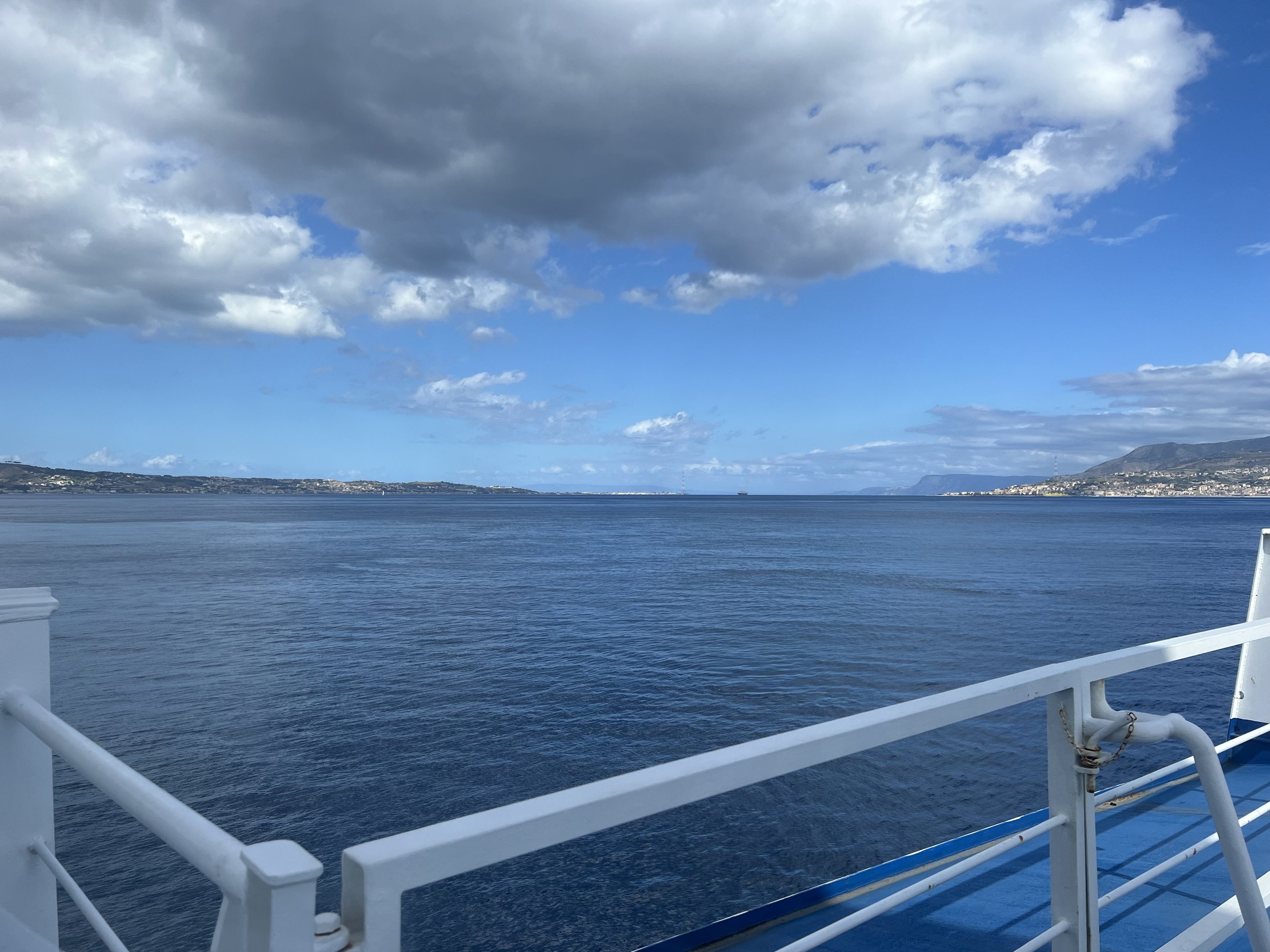
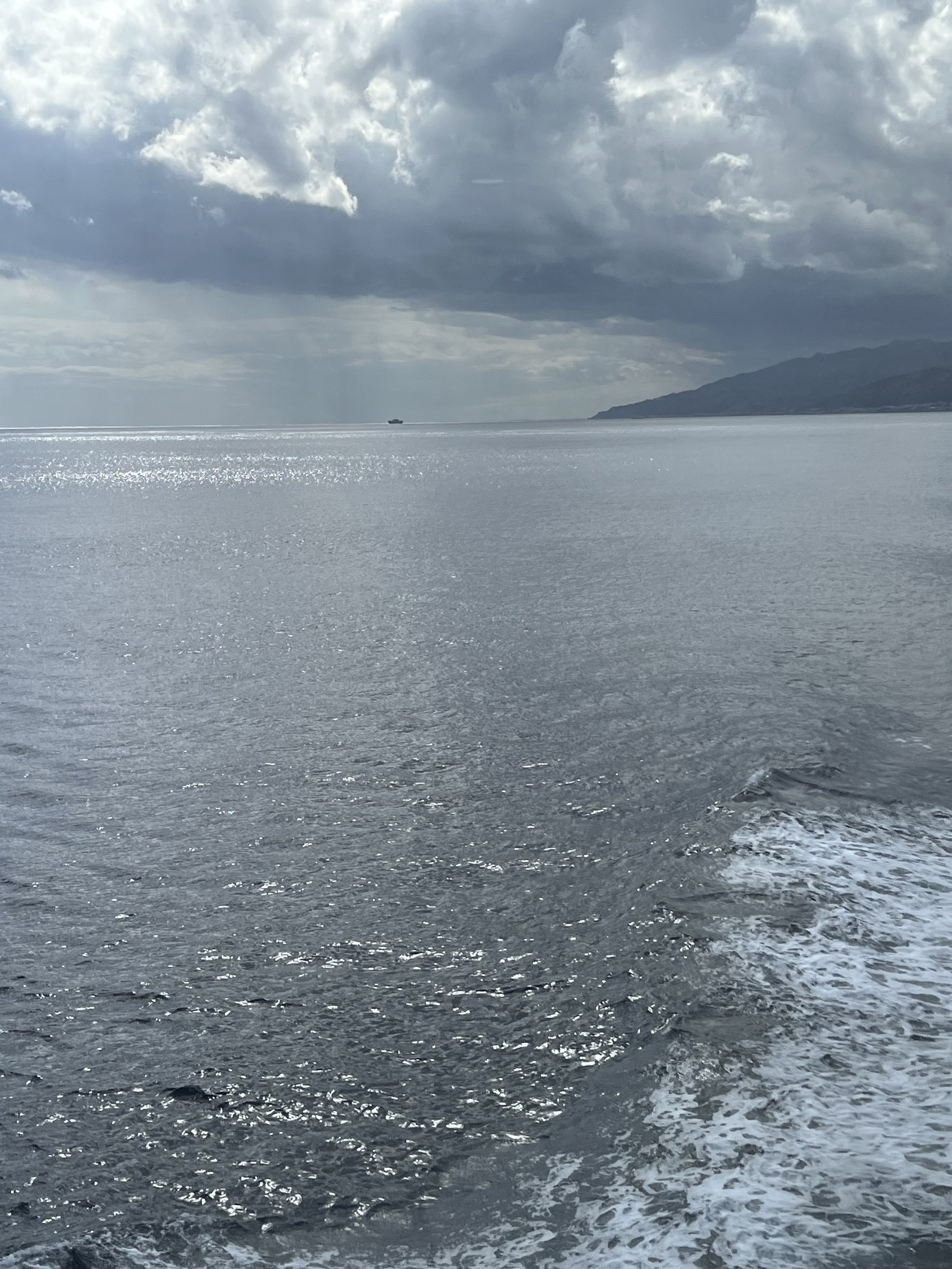
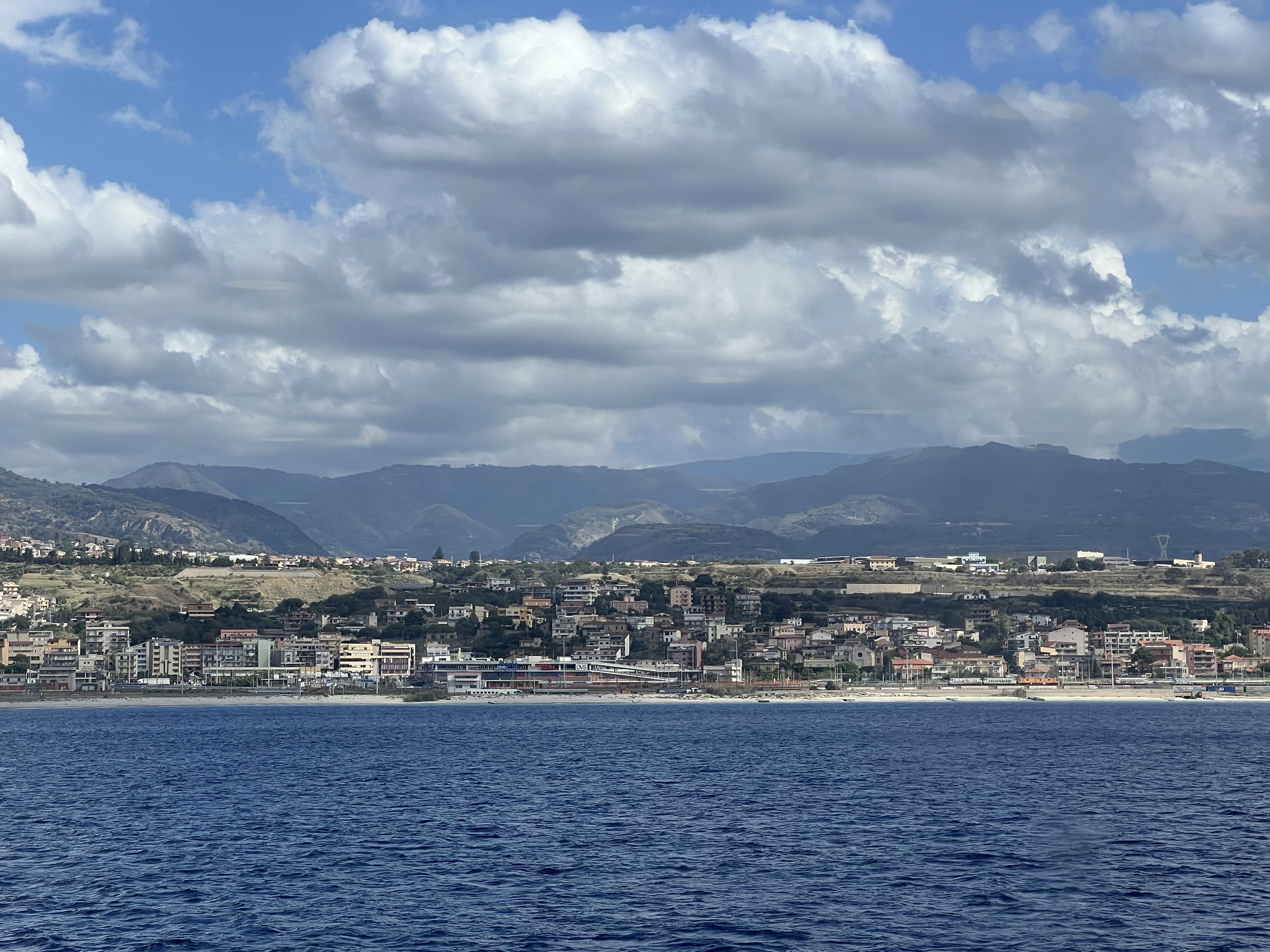
PHOTOS: Crossing from Sicily to the mainland.
Pausing in Pizzo…
Our loosely scripted venture continued to reward us with unexpected treasures. We did not know that our modest BnB room opened onto a small private balcony overlooking the sea and a 15th century castle. Though the fortified fishing village has survived Napoleonic invasion and two earthquakes, the current drama is its glorious sunsets. While enjoying a glass of a regional sparkling wine on our balcony, we watched each outlook below gradually fill with locals and tourists. Arriving on foot, in cars, or straddling “motos” they staked out spots to watch the sun melt into the sea and illuminate the volcanic Isle of Stromboli floating on the horizon.


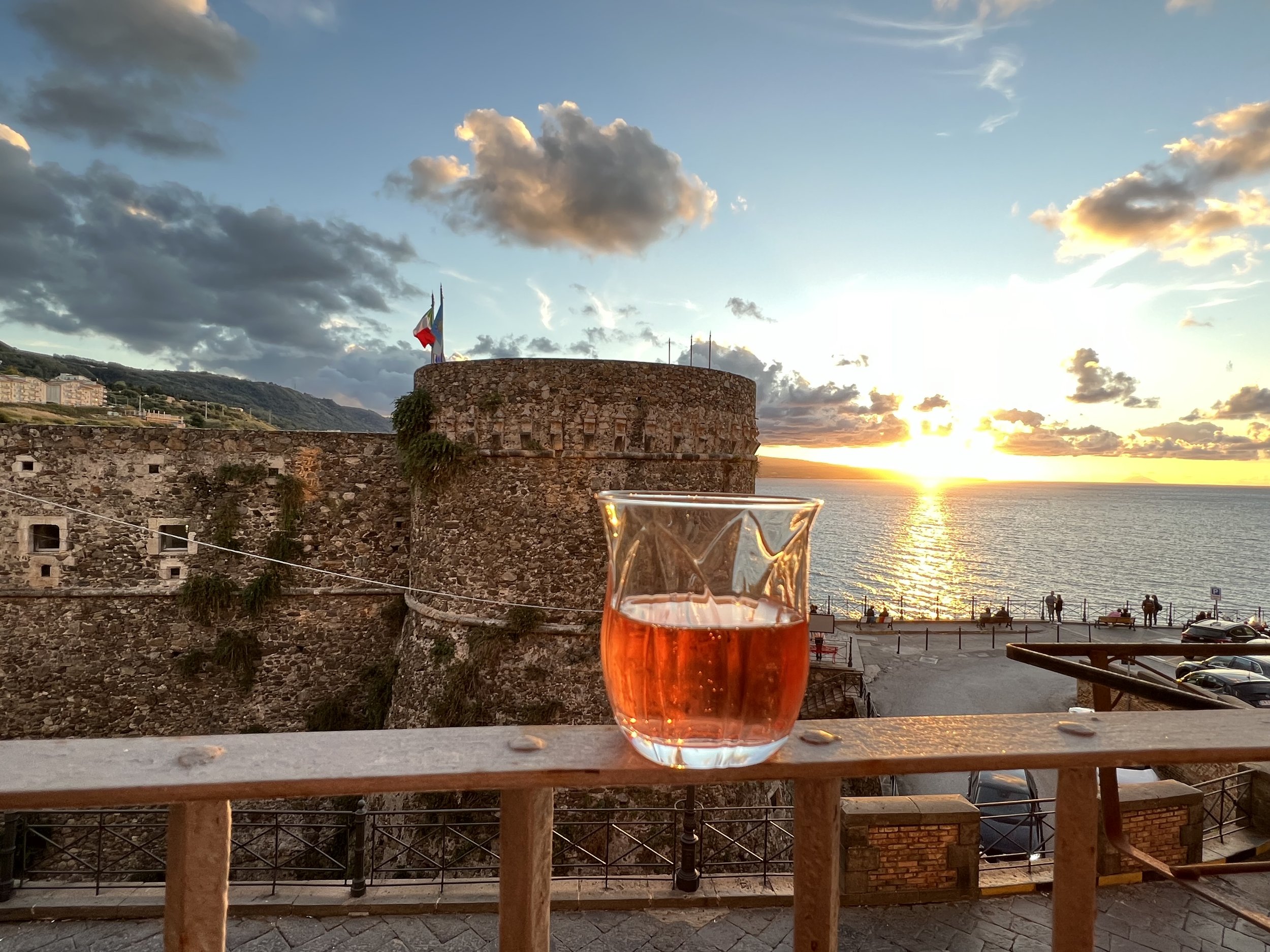
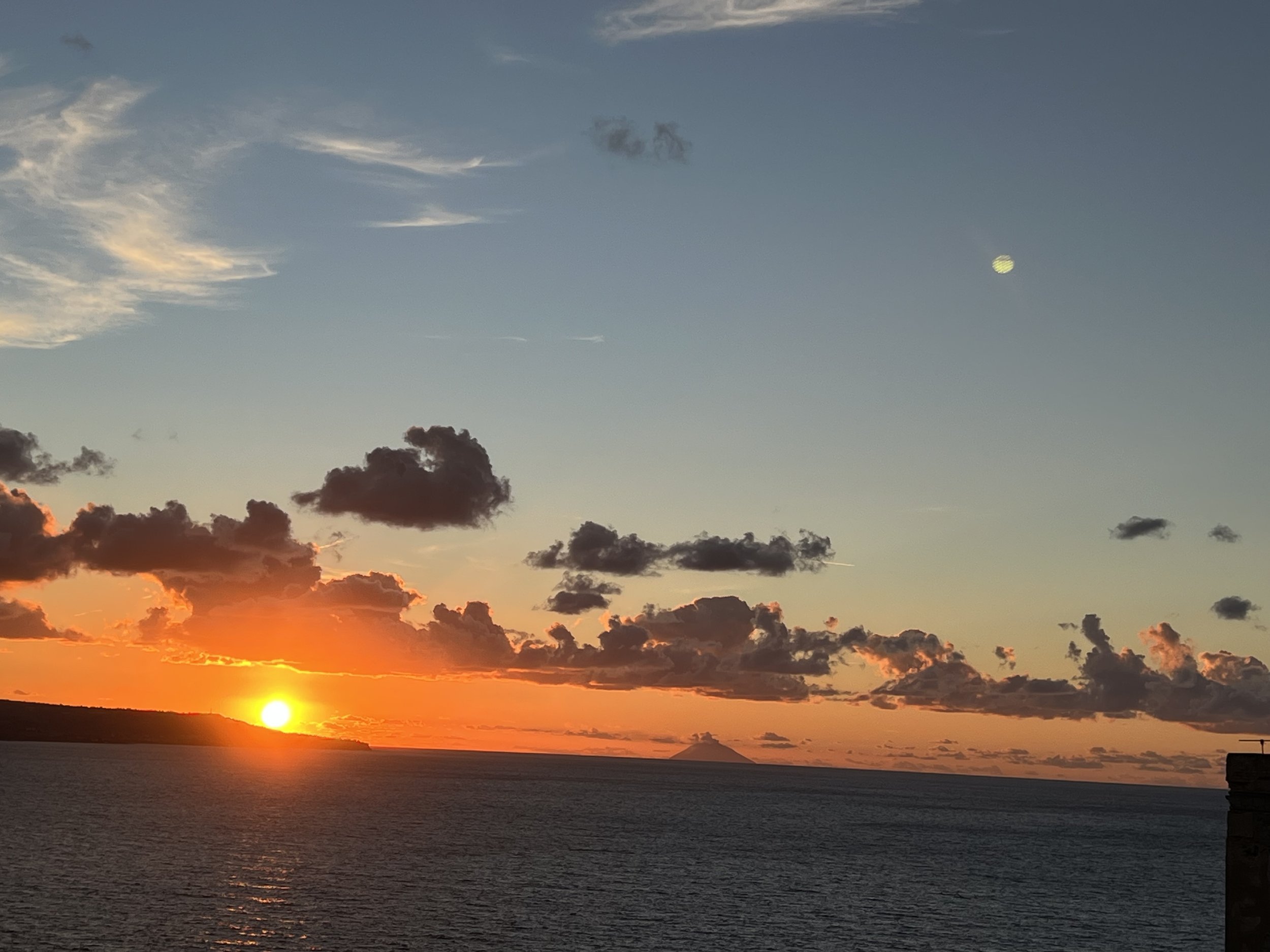
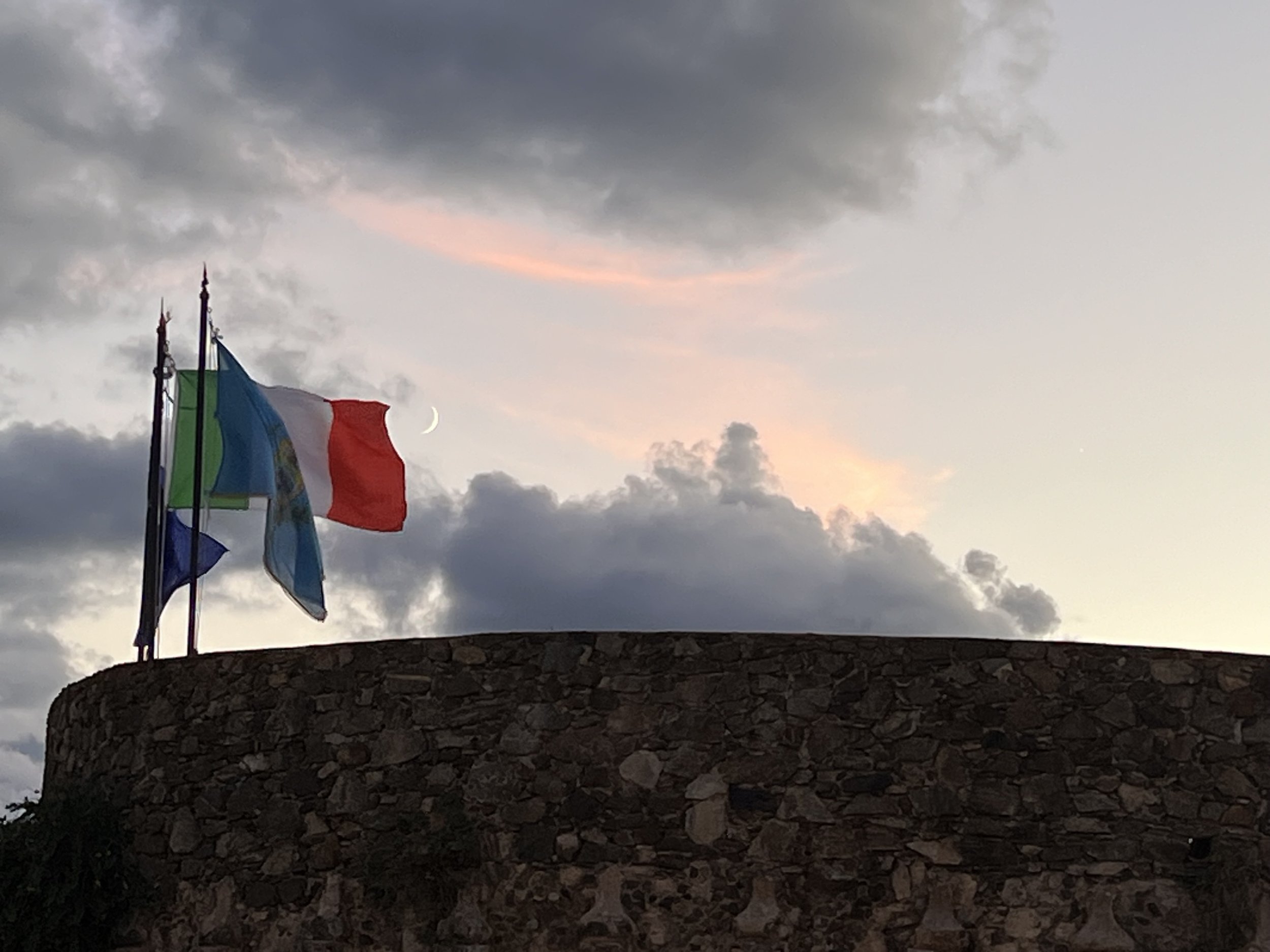
PHOTOS: Pizzo at sunset.
A lucky charm…
Before walking to dinner, I explored how we could get to Centrache, about 25 miles away, the next day. Pizzo was too small to offer Uber, car rentals, or a direct train. JB suggested we just hire a taxi. An add in English on the internet caught my eye “why hire a taxi when you can hire a driver?” It offered a number on WhatsApp that could be called or messaged. Since my Italian is pretty much limited to the names of pasta dishes, I used the message function and Google Translate to negotiate a flat fee for the round-trip. This left me wondering how we ever travelled internationally without such technological crutches. The driver and I agreed on an early morning departure from in front of one of Pizzo’s churches. I hoped the fact that he did not request a deposit, and had chosen a “holy” starting point, was sufficient proof that I had not fallen prey to a scam. I said a little prayer for insurance.
Any concern was unwarranted. As the day unfolded, Vincenzo proved to be our lucky charm and well worth every penny of his fare. Since he could only manage a little bit of English, we relied on the vernacular of gesturing that comes naturally with my “Italian blood.” The transmission-grinding drive to Centrache wound its way up zig-zagging mountain roads through a dense enchanting forest. My heart quickened with anticipation, of what I wasn’t certain, but the thick carpet of ferns, still glistening with early morning mist, seemed to promise the appearance of fairies, gnomes, or some other sorcery.
When we arrived in Centrache the sun was beginning to warm the crisp air. As we stepped out of the car, we could hear distant live music: a marching band with brass, woodwinds, and drums. We let the melody be our guide and began to wander the maze of narrow streets flanked with buildings constructed from stone, brick, or concrete block, depending on the structure’s age. We continued to twist and turn toward our musical siren, in and out of long shadows cast by the narrow multi-story dwellings. As the music crescendoed, the cloistered street burst onto a sun filled square genuflecting at the foot of a radiant yellow church and a band of militarily clad musicians. Peering into the sanctuary from the outside, we could see the ornate interior was dominated by an enormous figure of the Madonna and Child.
While we paused to take photos, listen to the music, and translate a poster explaining the events of the day, Vincenzo caught up with us. He had a grin from ear to ear as he excitedly approached me and said, “I go find your family.” I watched him engage a local man on the steps of the church. After some hand waving and pointing at me, the man nodded approval and disappeared down a pedestrian passage. Google Translate enabled me to translate a poster indicating that all of October the church was celebrating the Madonna, and the events were culminating that day. The band was to lead a procession carrying a small Madonna statue, borrowed from a local family’s chapel about 2.6 kilometers away, to the church. After the children of the village were blessed, the procession would carefully return the Madonna to her private space.
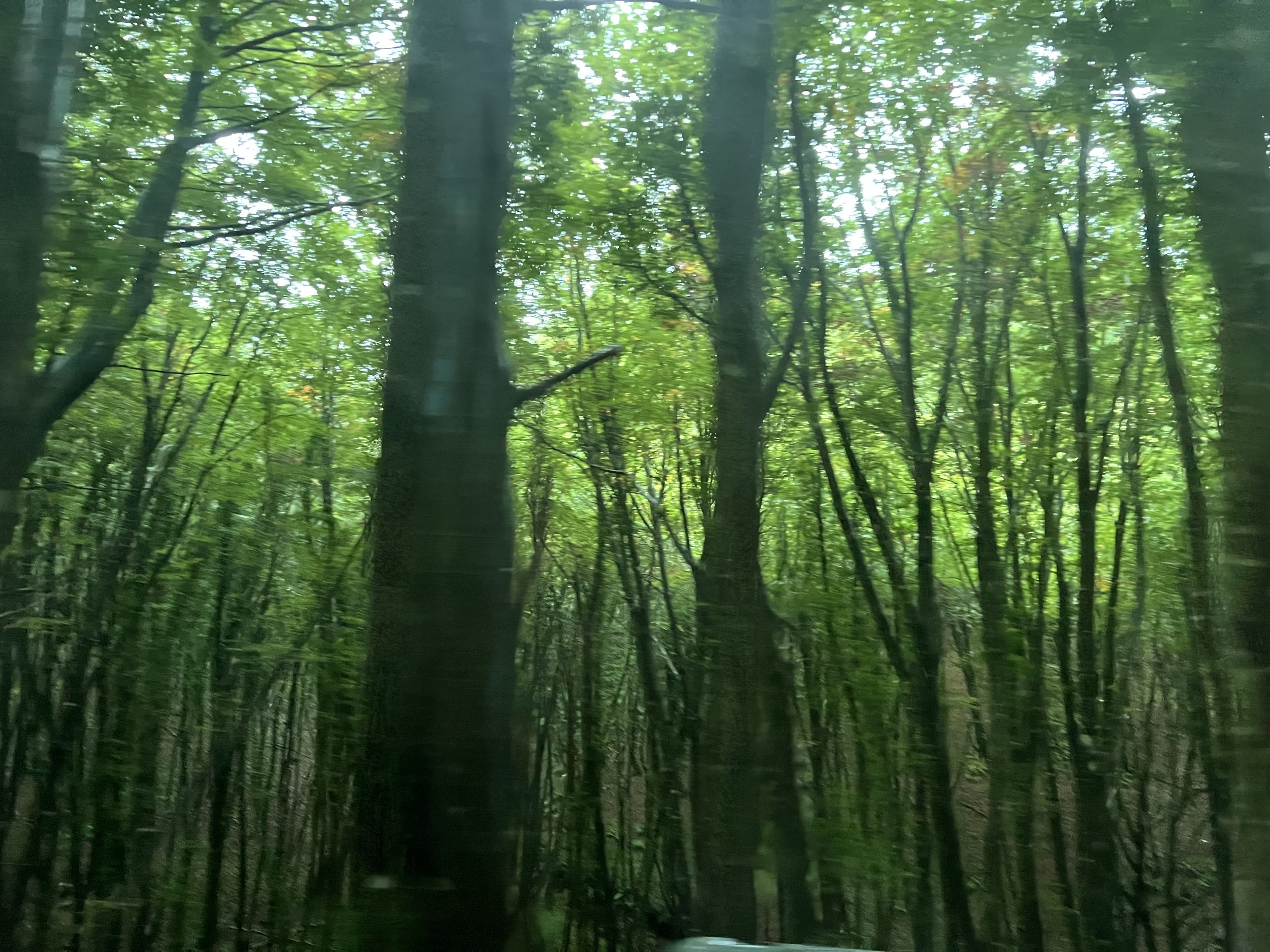

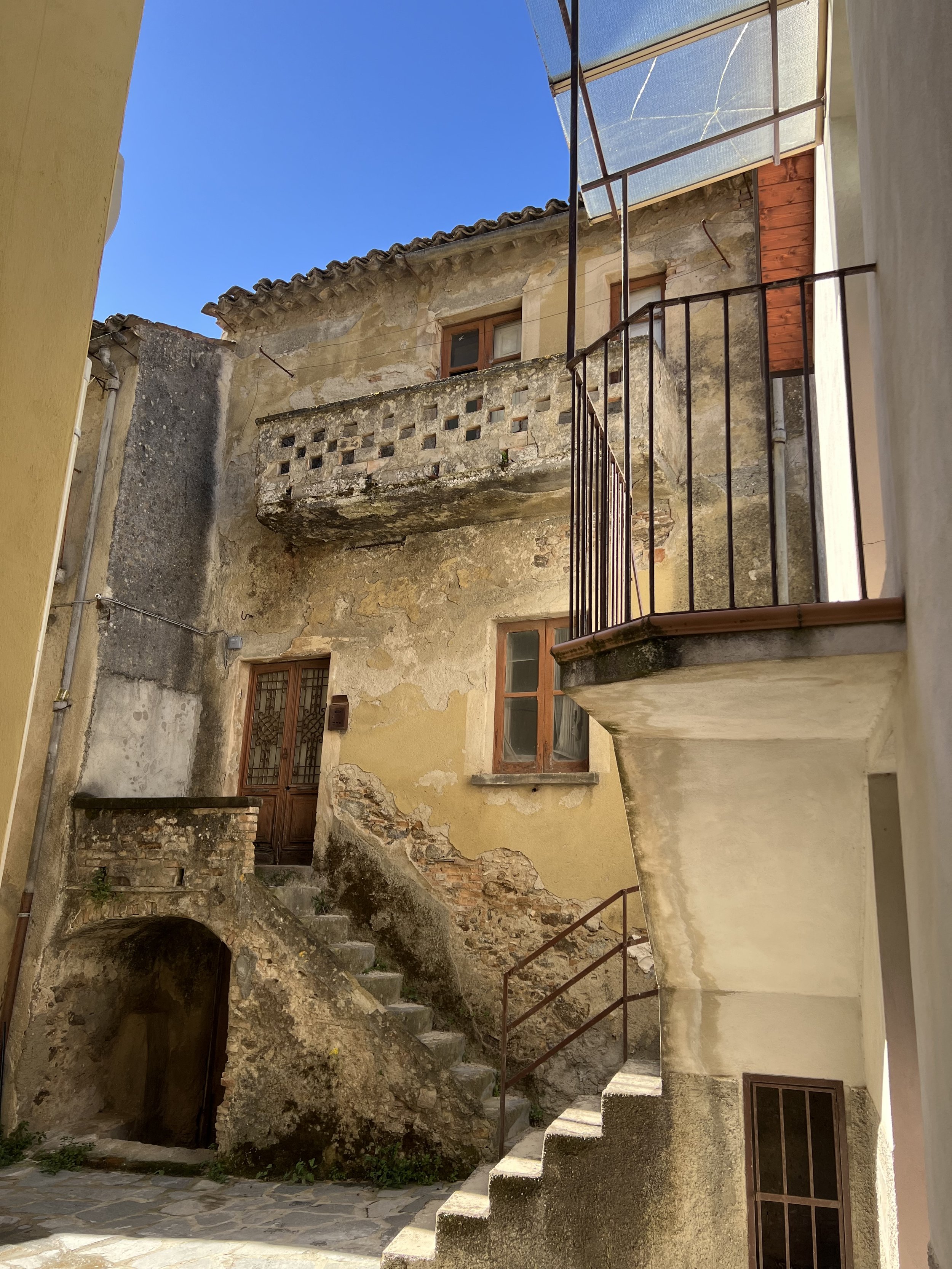

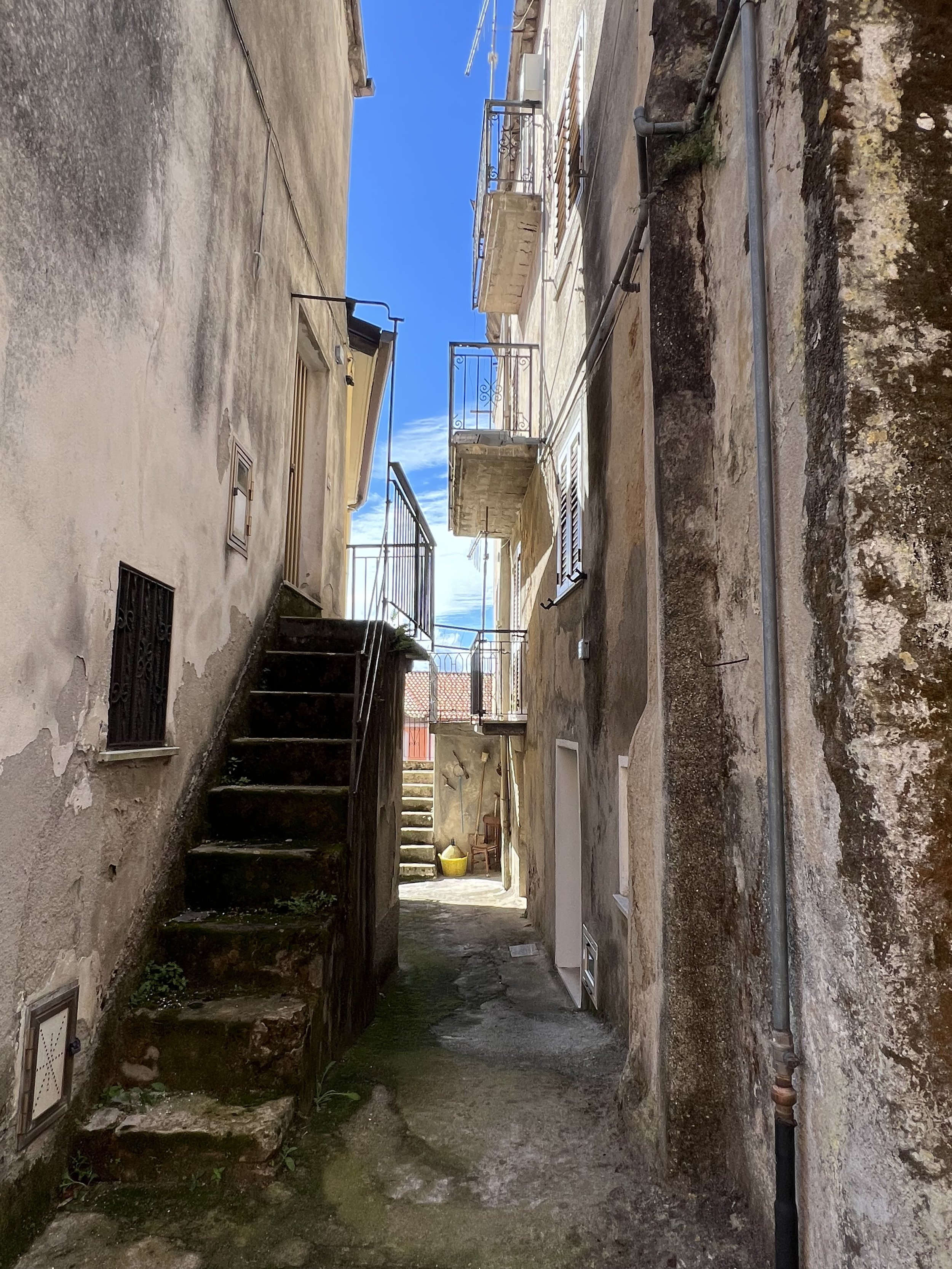
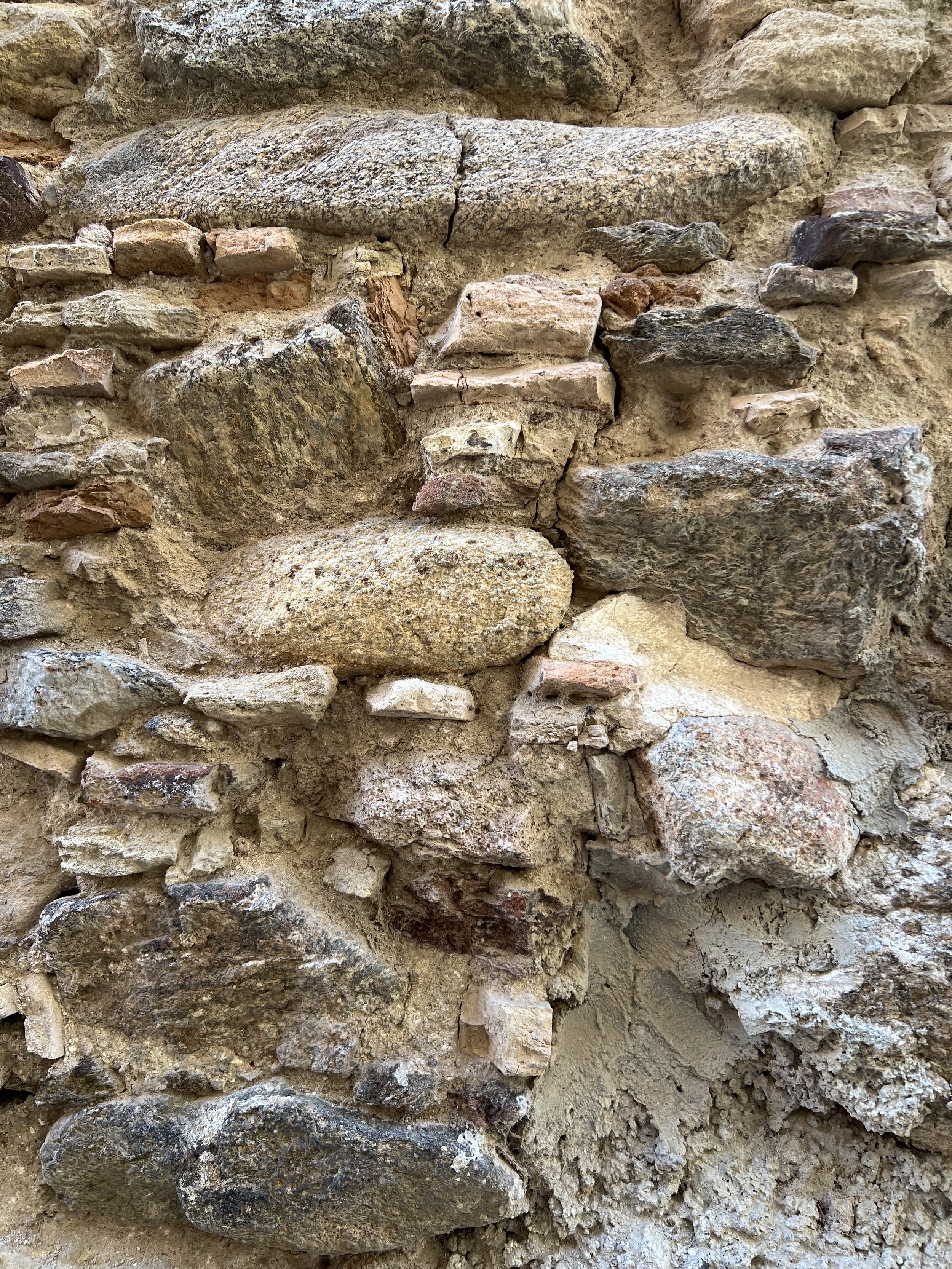
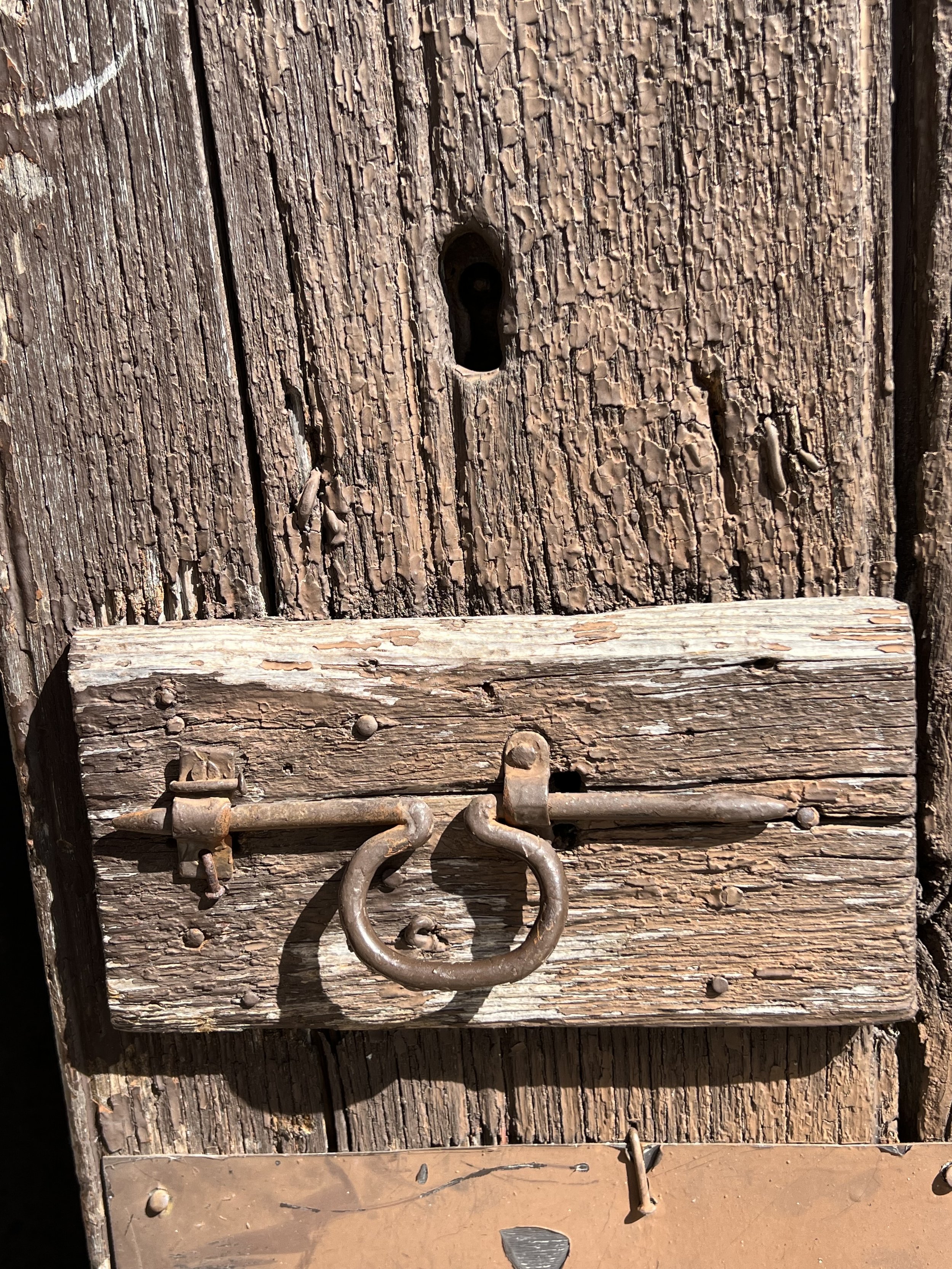



PHOTOS: The forested ascent to Centrache, the local architecture, the church square, Madonna, and band.
A legacy of names …
Roughly ten minutes later, the man from the steps returned with a snappy looking gentleman about my age. Vincenzo waved them over to us and they all started talking simultaneously, a conversational style with which I am well acquainted thanks to my father’s family. In a mix of Italian, English, and sign language, Vincenzo introduced me to Antonio (Anthony) Lombardo. His mother Rosa was a Gallo, my maiden name, and Antonio is a recently retired lawyer and artist. We learned that he had painted numerous murals in Centrache, including one we had stopped to admire at the entrance to the village.
Antonio’s grandfather would have been a cousin of my grandfather. Antonio had never met my grandfather as he had immigrated to America long before we were born. With Vincenzo’s help, he then explained that male names in local families were usually handed down in each generation and typically indicated the birth order. The Gallo family had developed its own naming sequence: Antonio (Anthony) was used for the eldest son, Giuseppe (Joseph) for the next born, and Pasquale (Paul) as a third option. Like a verbal DNA chain, this pattern held true, at least in part, even after my grandfather Pasquale and his brother Joseph came to America. My father was named Joseph and his older brother, Anthony. My parents named my older brother Anthony, and we grew up with first cousins named Joseph and Paul.
While JB photographed our magical encounter, I experienced a strange sense of sudden familiarity, perhaps somewhat akin to an adopted child finally meeting a birth parent. Here I was, almost 4,400 miles from where I grew up, discovering a family member connected to me via a long chain of paternal names. I doubt my own father knew how these names extended so deeply into the past or carried such meaning. All of this confirmed that Antonio was certainly my cousin, and indeed unnecessary proof, as anyone with the same family name in a village of 400 people is undoubtedly related. Antonio was clearly experiencing a similar realization, as he suddenly put his arms out to me and declared “cousin!”
Despite my concern that Antonio was about to miss the special mass at the church, he insisted on showing us the house where my grandfather was born. Now an Airbnb, it is no longer owned by the Gallo family. Our newly formed ensemble, including the unnamed man from the church steps, who seemed as excited as us about the family reunion, climbed narrow streets toward the modest two-story home. Once there, we paused for more photos and attempted conversation. After much hugging and kissing, we let Antonio hurry back to the church. Returning to the car, we paused for photos of Antonio’s mural and a memorial honoring young men from the village who died in the two world wars. It included Antonio Gallo, either a great or great-great uncle (that detail remains fuzzy) who had lost limbs in World War I and eventually died from his wounds. I now wonder if the helmet from that war, displayed in my grandfather’s music room, belonged to this Antonio and was brought by my grandfather from Centrache.
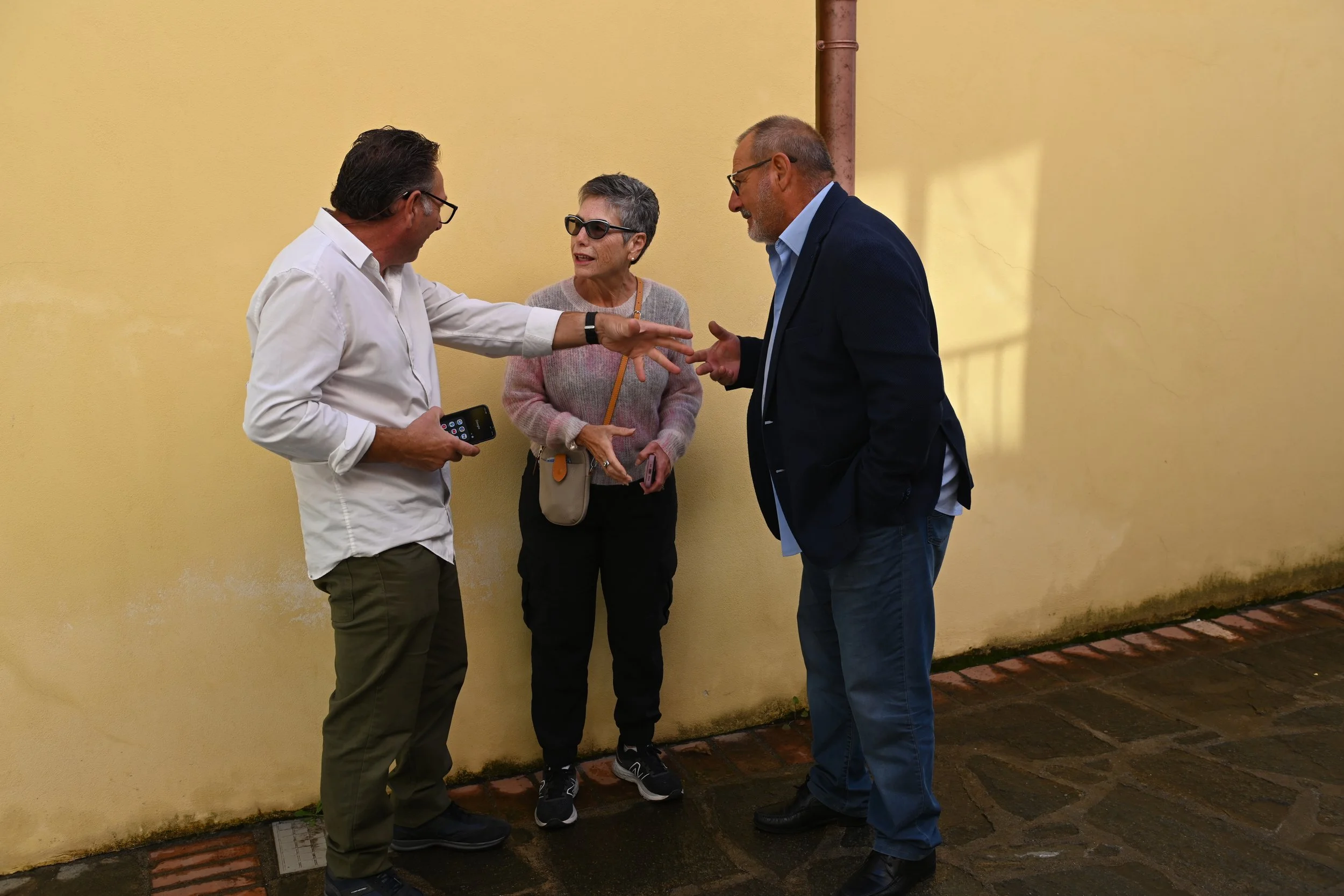

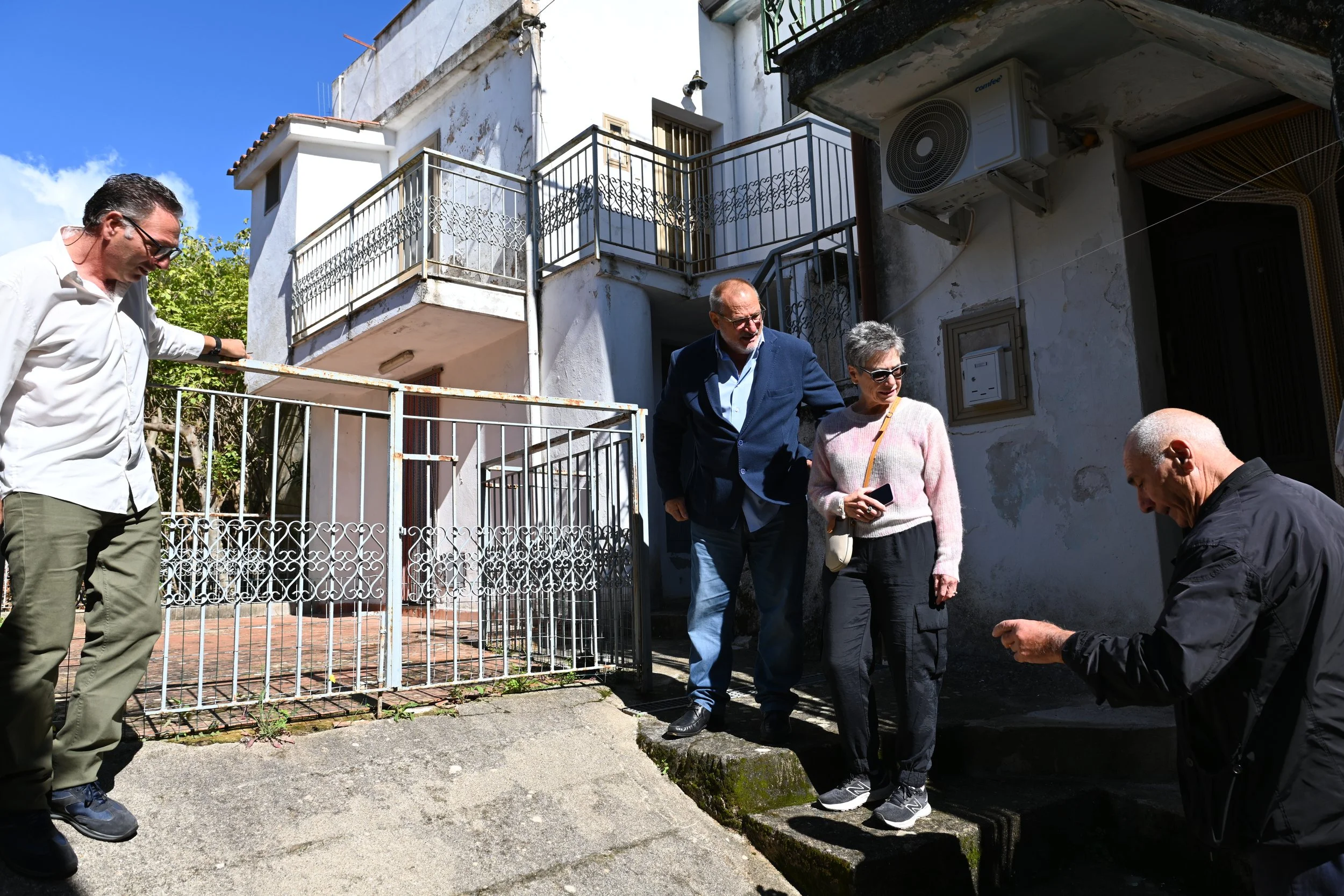
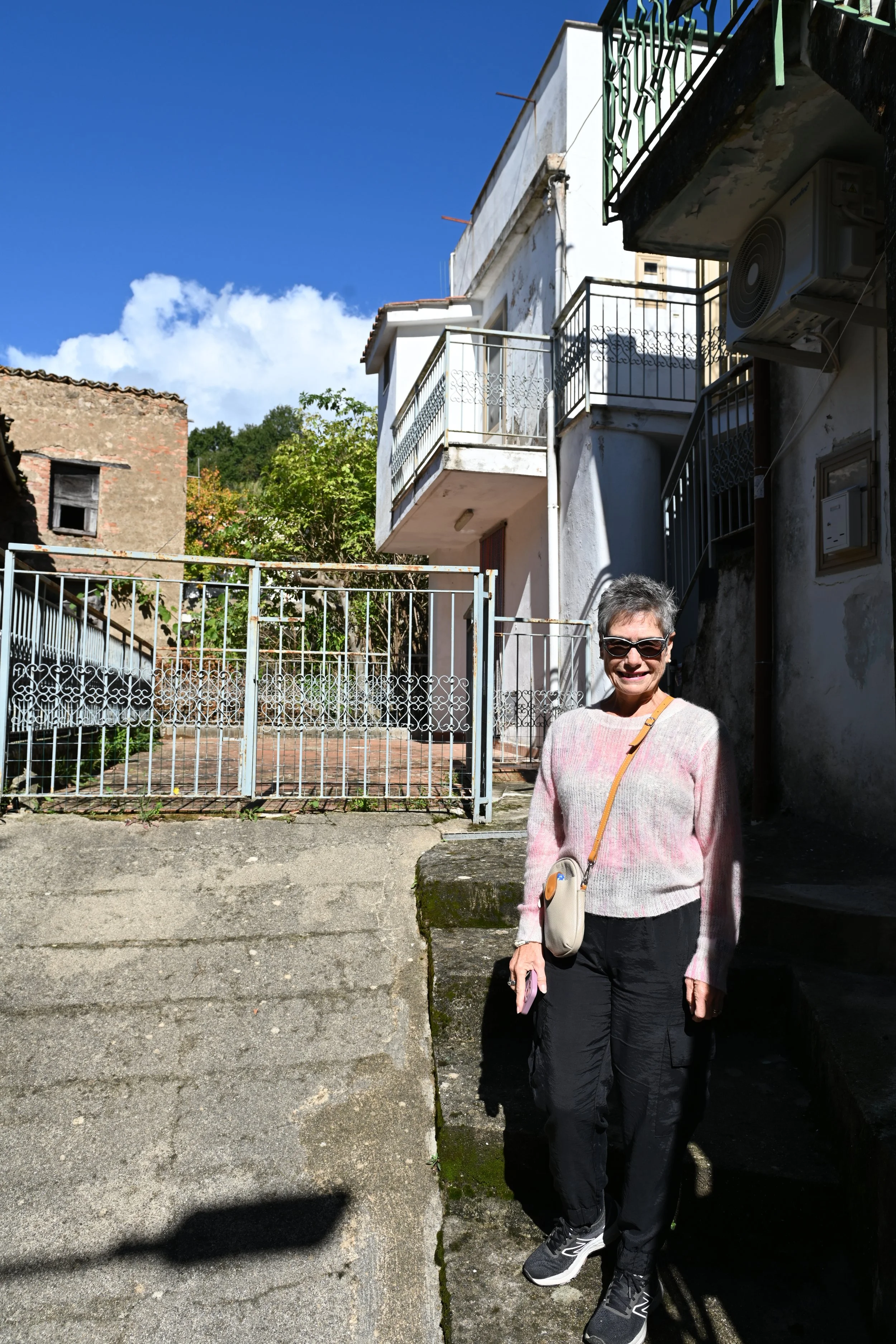

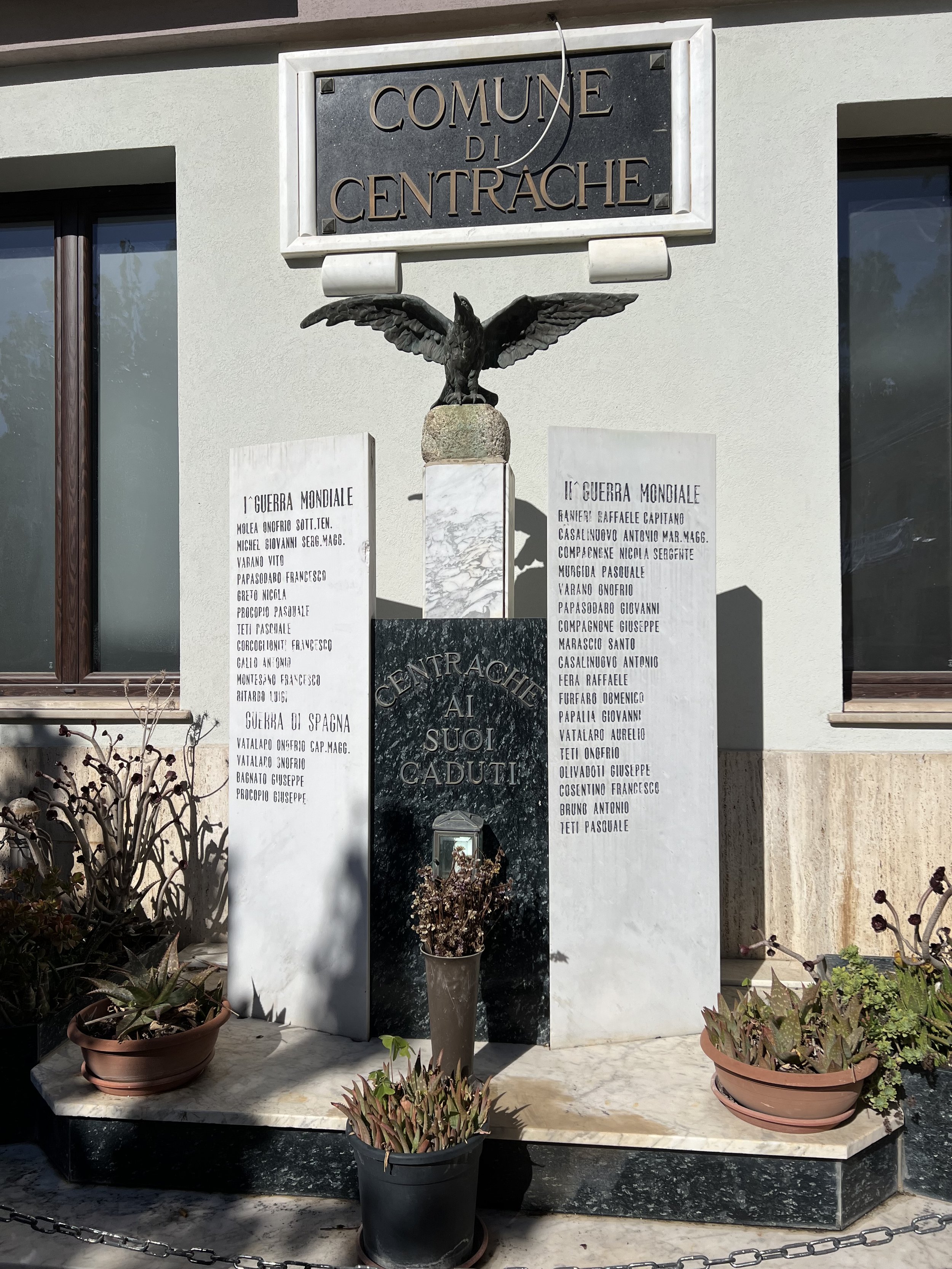
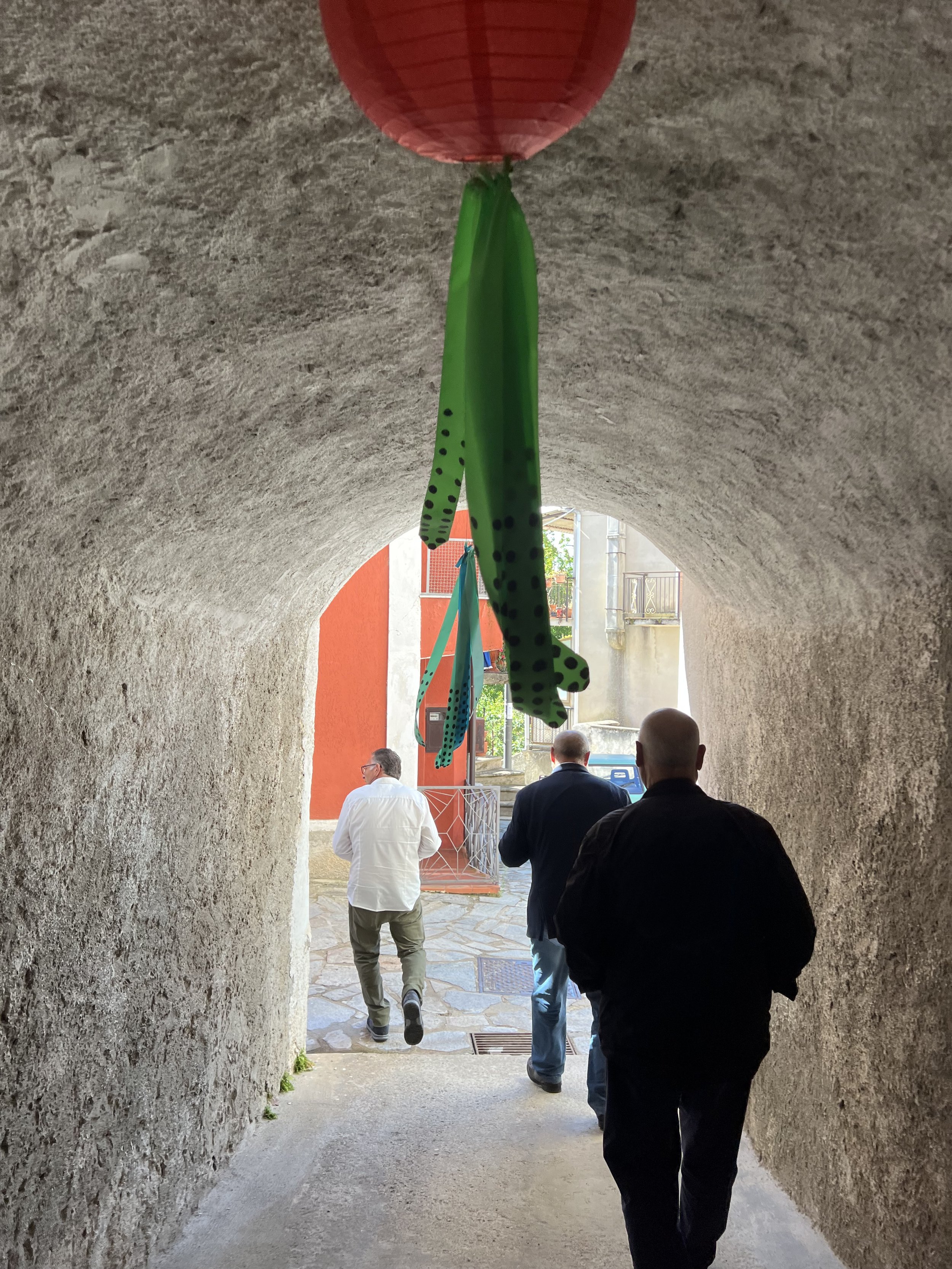

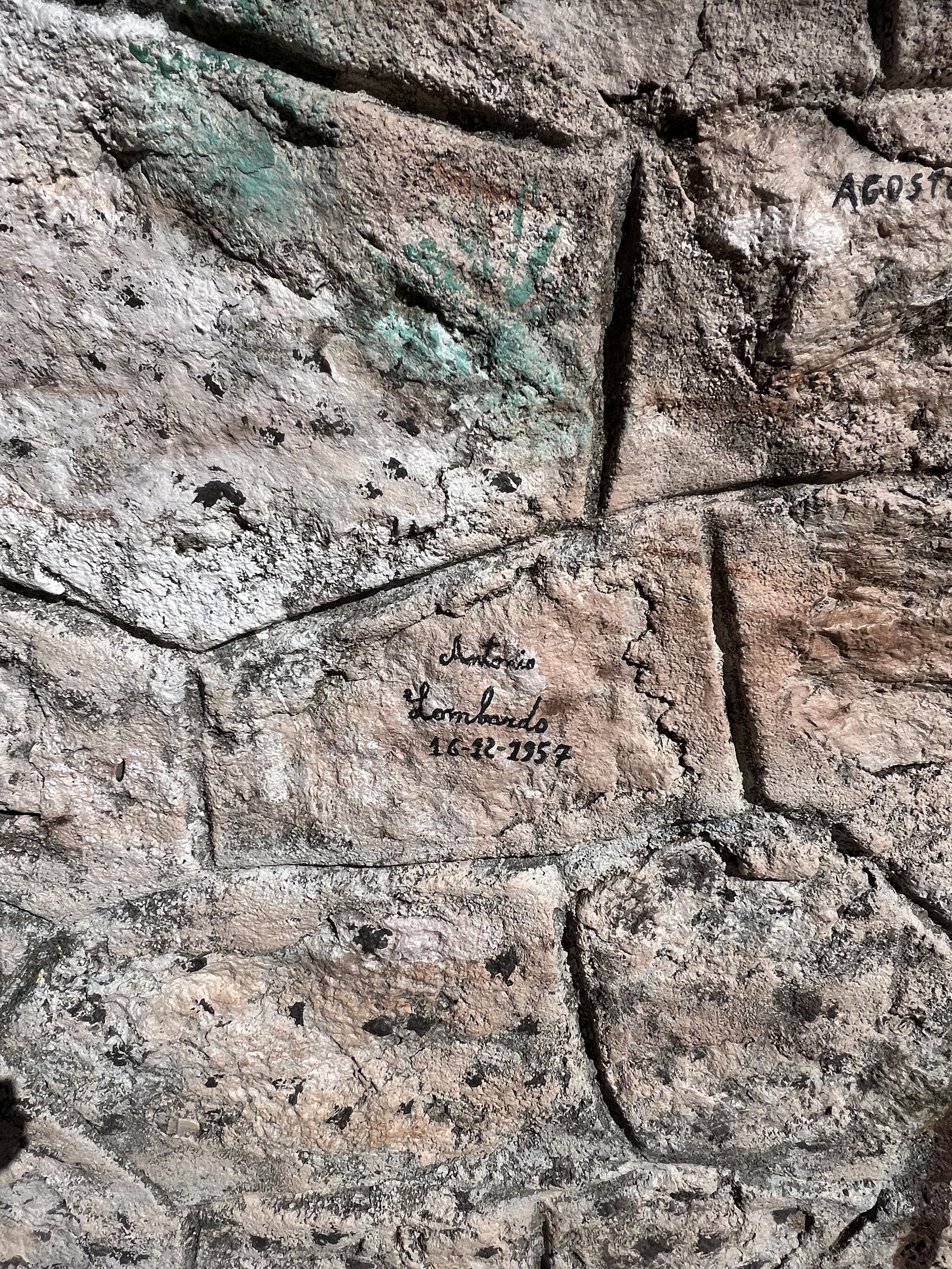
PHOTOS: Vincenzo on the left intruding me to Antonio, me with Antonio, the Gallo family home, the world war memorial, Antonio’s mural.
The gift of connection…
I remain deeply grateful to Vincenzo for his belief in the importance of family and the gift of connection to mine that he made possible. Meeting the Antonuccio sisters in Siracusa and my cousin in Centrache has left me thinking a lot about Shakespeare’s often quoted line from Romeo and Juliet: “what’s in a name?” His star-crossed lover Juliet goes on to say, “that which we call a rose, by any other name would smell as sweet.”
But I disagree with Juliette’s assertion that a name is just a name. My parents chose to give me the names of my grandmothers. During my teens, I adopted an “anglicized” nickname, wanting to establish my own identity set apart from my father’s Italian mother. But as I matured and gained understanding of the challenging world my grandmothers navigated, I became proud to bear both their names, as given to me, in honor of their valuable examples. I know deep in my heart that a name is often not “just a name” and that a rose by a different name might not actually be as sweet.
If you would like to ask us about this post or share a similar experience, click below.

